Carole Dean – The Art of Film Funding Blog
 Carole Dean founded From the Heart Productions in 1992 to help indie filmmakers get their films funded.
Carole Dean founded From the Heart Productions in 1992 to help indie filmmakers get their films funded.
In her blog, she shares her knowledge and advice on:
- Raising Money for Your Film
- Getting Distribution
- Manifesting Money and Success
- Crowdfunding
- Fiscal Sponsorship
And more with the goal of giving filmmakers the tools to get their films produced.
She hosts the weekly podcast, The Art of Film Funding, interviewing those involved in all aspects of indie film production. She is also the author of The Art of Film Funding, 2nd Edition: Alternative Financing Concepts. See IMDB for producing credits.
Recent Blogs by Carole Dean
(Click on Blog Title to Expand)
by Carole Dean
As important as it is to celebrate getting financing for you indie film, it’s necessary to show gratitude to those that gave you the money.
Showing or giving gratitude, is principal 3 in Wallace D. Wattles book The Science of Getting Rich. Long before “The Secret”, Wallace’s book pioneered how to use power of our minds to better our lives, become successful, and to expand our creativity.
In my third video in analyzing his work, I go into the rewards and benefits of gratitude in creating success.
Ask Largely
Wallace says do not be afraid to ask largely. Do not look upon poverty as part of the plan.
Wallace shared the story of a poor man living in a rented house having only what he earned from day to day. He decided to ask for a new rug for the floor of his best room and a coal stove to heat the house.
Following Wallace’s instructions to use the power of his mind to form in his thoughts that which he wanted, he obtained these things in a few months. Then it dawned upon him that he had not asked enough.
He went through the house and planned on what he wanted and holding this picture in his mind and living in the Certain way he began moving toward what he wanted. Now, he owns the house and is rebuilding it to his mental image.
Gratitude Will Lead Your Mind
You need to relate yourself to the Formless Intelligence in a harmonious way to bring 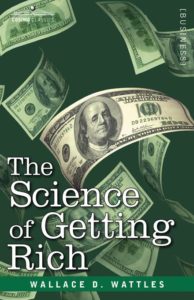 you into perfect unity with God. You must first believe that there is one Intelligence substance; second you believe this this substance gives you everything you desire and third you relate yourself to it by a feeling of deep and profound gratitude.
you into perfect unity with God. You must first believe that there is one Intelligence substance; second you believe this this substance gives you everything you desire and third you relate yourself to it by a feeling of deep and profound gratitude.
Therefore, the soul that is always grateful lives in close touch with God. The mental attitude of gratitude draws the mind into closer touch with the source from which blessings come.
Principal 3 of Wattle’s The Science of Growing Rich is Gratitude and this will lead your mind along the ways by which things come.
The Law of Gratitude
It will keep you in close harmony with creative thought and prevent you from falling into competitive thought. There is a law of Gratitude and it is absolutely necessary that you should observe the law if you are to get the results you seek. The law of gratitude is the natural principle that action and reaction are always equal. The outreaching of your thankful praise will bring an instantaneous movement towards you.
The moment you permit your mind to dwell with dissatisfaction upon things as they are, you begin to lose. Your fixed attention upon the ordinary, the poor and the mean and your mind takes the form of these things and attract them to you. We are thinking substance and thinking substance always takes the form of that which it thinks about!
The grateful mind is constantly fixed upon the best and tends to become the best. Also, faith is born of gratitude. The grateful mind continually expects good things and expectation becomes faith. Please be grateful for every good thing that comes to you and give thanks continuously. Your rewards will be many. You life’s energy will increase and your respect for your fellow man will be enhanced.
We will continue with Principal 4 in the next episode of Wallace D. Waddles the Science of Getting Rich.
Carole Dean is president and founder of From the Heart Productions; a 501(c)3 non-profit that offers fiscal sponsorship for independent filmmakers. She hosts the weekly podcast, The Art of Film Funding, interviewing those involved in all aspects of indie film production. She is also the author of The Art of Film Funding, 2nd Edition: Alternative Financing Concepts. See IMDB for producing credits.
by Carole Dean
Getting funding for your indie film is not going to happen unless you do two things.
You’ve got to believe it can happen and believe you can make it happen.
It all starts with manifesting your success. In my previous blog, I introduced Wallace D Wattles and his book The Science of Getting Rich. Written in the early 1900’s, Wallace was a pioneer in discovering and writing about the using the power of the mind in changing your life, creating your success, empowering your creativity.
In my new video, The Science of Getting Rich Part 2, I go into how Wattles explains how everything you see on earth is made from one original formless substance. This substance is a powerful energy that we’ve yet to harness.
First Two Principals of The Science of Getting Rich
Wattles says Man can form things in his thoughts and, by impressing his thought upon what he calls the formless original substance of energy which forms the universe, he can cause the thing he thinks about to be created.
For you to do this you need to acquire the ability to think the certain way; this is the first step toward getting rich.
Wallace says the second principal is “To think according to appearance is easy; to think truth regardless of appearances is laborious and requires the expenditure of more power than any other work we are called upon to perform.”
Nothing Harder Than Sustained Thought
There is no labor from which most people shrink as they do from that of sustained  thought; it is the hardest work in the world. This is especially true when truth is contrary to appearances.
thought; it is the hardest work in the world. This is especially true when truth is contrary to appearances.
Every appearance in the visible world tends to produce a corresponding form in the mind which observes it. This can only be prevented by holding the thought of the TRUTH. (meaning that everything is perfect)
For example, to look upon the appearance of disease will produce the form of disease in your own mind, and ultimately in your body, unless you hold the thought of the truth, which is that there is no disease it is only an appearance and the reality is health. To do this requires power. He who acquires this power becomes a MASTER MIND. They can conquer fate; he can have what he wants.
Every Thought Becomes a Form
We must grasp the truth that every thought held in this substance becomes a form.
The universe desires that you have everything you want. Your purpose must be in alignment with nature. Therefore, you want to get rich in order that you may eat, drink and play a good part in helping the world to find truth. You can help others by making the most of yourself than in any other way.
Most of all, this “original substance” will make things for you but it will not take things away from someone else and give them to you. You are here to create, you are not here to compete for what is already created. Get rid of the thought of competition. Become a creator to get what you want. Supply is not limited. Please believe this. It frees you to create.
Keep Your Mind on Your Vision
Know that the money you need will come. Always look at the limitless riches in formless substance and KNOW that they are coming to you. Never worry. Keep your mind on your vision. You can create form from the formless structure around you.
Example, if you want a new machine, hold the mental image of it with the most positive certainty that it is being made or on its way to you. After forming the thought, have the most absolute faith that it is coming. This thinking substance has created all the machines already made and will cause the creation of one for you when you set it in motion by desire and invincible faith.
What and how to you ask for things? We will cover that in part 3 of Wallace D. Wattles brilliant book the Science of Getting Rich.
Carole Dean is president and founder of From the Heart Productions; a 501(c)3 non-profit that offers fiscal sponsorship for independent filmmakers. She hosts the weekly podcast, The Art of Film Funding, interviewing those involved in all aspects of indie film production. She is also the author of The Art of Film Funding, 2nd Edition: Alternative Financing Concepts. See IMDB for producing credits.
By Carole Dean
For indie filmmakers seeking film funding, the fantastic book The Science of Getting Rich contains advice on a fantastic tool that is often overlooked and underused.
The power of your mind to manifest success.
Before the film “The Secret” or before the book “Think and Grow Rich”, there was author Wallace D. Wattles.
He was a serious man who wrote the Science of Getting Rich and other important books about using the power of your mind. He realized its power in the early 1900’s.
In my newest video blog, and in subsequent videos to follow, I will share the amazing information gleaned from his book with you.
His groundbreaking discoveries can be used today to enrich your life, bring you success, and if you are a filmmaker, it will help you realize your full creative potential.
Science of Getting Rich
Wallace D. Wattles says that to fully make use of your creative powers you need to be rich. With money…… you can use your creativity for your art and your family. The object of all life is development and to be developed you need money. He thinks every man and woman should have money to unfold their soul and develop talent.
Wallace contends our right to life means our right to have free and unrestricted use of all things necessary to our fullest unfoldment of our right to be rich.
Everyone should have that which can contribute to the power, elegance and richness of life. It is perfectly right that you should desire to be rich so you should give your best attention to these teachings.
How to Make The Science of Getting Rich Work for You
 Certain laws, Wallace determined, govern the process of acquiring riches and, when they are learned and obeyed, you will get rich. No matter how poor you may be, if you begin to do things in the Certain Way, you will begin to get rich and you will begin to have capital.
Certain laws, Wallace determined, govern the process of acquiring riches and, when they are learned and obeyed, you will get rich. No matter how poor you may be, if you begin to do things in the Certain Way, you will begin to get rich and you will begin to have capital.
He wants us to understand that everything you see on earth is made from one original substance which he also calls the formless substance. The original substance is a powerful energy that we’ve yet to truly harness or master. Wallace says there is no limit to the supply of this “original substance.” The universe is made from it, the spaces in and between the forms of the visible universe are permeated with it, and the universe is filled with the original substance.
We know today that quantum physics says this is true. It says that if we are sitting 3 feet apart the energy between us is enough to boil all the oceans on earth.
So, Wallace was right. And he believed the resources of the Original substance are at the command of every man or woman who will act and think in a certain way.
Proving the Science of Getting Rich
Wallace says you need to use his ideas as if they were proven because they are. He believes you can prove their truth by acting on a set of principles that he has outlined.
The first principle in the science of getting rich is to understand that thought is the only power which can produce tangible riches from the Original or Formless Substance. A thought of form, your imagination for example, produces the physical form. We live in a thought world which is part of a thought universe.
No thought of form can be impressed on original substance without causing the creation of the physical form.
We are a thinking center and we can originate thought. All the physical forms we fashion with our hands must first exist in our thought; we cannot shape a thing until we have thought that thing.
Thought in thinking substance, produces shapes. We can communicate our thought to original thinking substance and we can cause the creation or formation of the thing we think about.
We can form things in our thought, and by impressing our thought upon formless substance, can cause the thing we thinks about to be created.
To do this, you need to acquire the ability to think the certain way; this is the first step toward getting rich. We will cover this first step in part 2.
Carole Dean is president and founder of From the Heart Productions; a 501(c)3 non-profit that offers fiscal sponsorship for independent filmmakers. She hosts the weekly podcast, The Art of Film Funding, interviewing those involved in all aspects of indie film production. She is also the author of The Art of Film Funding, 2nd Edition: Alternative Financing Concepts. See IMDB for producing credits.
Making money theatrically distributing your documentary has been an elusive goal for filmmakers. Except for one.
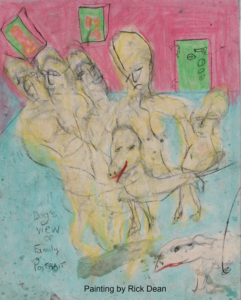
I recently interviewed Christo Brock, writer/director of the documentary Touch the Wall, on my Art of Film Funding Podcast. He has perfected a 3 part formula to pull it off that resulted in his film being screened 363 times to date.
Be determined to build your audience before your film is finished. Find a champion.
As a basis for their film, Christo Brock and his partner Grant Barbado chose to follow two Olympic swimmers as they trained for the London Olympic Games. One of his swimmers, Missy Franklin, became an international sports star when she won four Gold Medals and broke two world records.
Christo & Grant, like many other documentary filmmakers, seem to have the Midas touch by choosing people who become famous in their field. This often makes the years invested by the filmmakers profitable. That’s what I like to see, filmmakers who make money on documentaries.
Building an Audience Before Your Film is Finished
Christo raised $119,000.00 (see below for bonus crowdfunding tip) through Kickstarter. He says it was a real blessing because this connected him to his major portion of his audience.
He discovered more of his audience while creating the documentary. Each time they filmed a swim event, both he and Grant spent time meeting people, getting names and especially looking for groups and organizations. Then, they would follow up and connect to them.
They were constantly adding names to their database and keeping their audience informed about the film. They also hired people to help with outreach and had them focus on contacting swim clubs and making savvy posts online. They worked hard to engage people and which would later paid off financially.
Finding a Champion
He then took Peter Broderick’s advice and found a champion in USA Swimming which is the governing body of amateur swimming in the US.
In the interview, Christo reiterated what producer Tom Malloy and I teach to filmmakers in our Intentional Filmmaking Class. Find an audience to become dedicated champions. Find groups or people that care about the project early on because they have a stake in it.
USA Swimming wanted to see the film completed. They were there to donate, follow the film, and help fill up theaters for screenings.
Bonus Crowdfunding Tip
I asked Christo for a good tip on crowdfunding. He says for his new film, on every interview he makes sure they take lots of behind-the-scenes footage, both stills and video. He asks the interviewee to give him a pitch for his Kickstarter.
When he runs his campaign, he will have these “asks” from people in the film. He has them say things like “Hey, I am John Smith and I hope you support this film about craft beer.” Just that short and it works.
Check out his web site to see how he used shots of Missy Franklin on his web site for funding his swim film. http://www.touchthewall.com/film-clips
Carole Dean is president and founder of From the Heart Productions; a 501(c)3 non-profit that offers fiscal sponsorship for independent filmmakers. She hosts the weekly podcast, The Art of Film Funding, interviewing those involved in all aspects of indie film production. She is also the author of The Art of Film Funding, 2nd Edition: Alternative Financing Concepts. See IMDB for producing credits.
In Receiving Miracles 3, Carole Dean Covers The Final Step You Need to Take to Receive Miracles in Your Life and Your Filmmaking

In Receiving Miracles 1 and 2, we covered 6 things to improve your life and that will open you for receiving miracles.
First, was about giving gratitude daily for the many things you have.
Second, we learned how powerful your words are and to remember to watch your thoughts because they become words.
Third, was to hold yourself in the highest esteem at all times.
Fourth, love yourself. Praise yourself daily for the smallest thing you do.
Fifth, when you ask for a miracle don’t worry about the “HOW”! Focus on your to do list to achieve a miracle.
Six is visualizing. It’s the ability to pretend like you did when you were a child. I want you to pretend you already have what you want….that is powerful.
Now, I want you to forgive.
Hoʻoponopono
There is an ancient Hawaiian ceremony called hoʻoponopono that is a powerful tool for transformation. It can clear your DNA. It can clear your lineage for 12 generations back.
The word hoʻoponopono means “to set things right.” You do this by connecting to the source within you and accepting responsibility for choosing and creating this life.
Forgiveness can be one of the most powerful healing tools. Letting go of old hurts brings new energy and vitality to everyone. Forgiveness-Hawaiian style teaches us to forgive not only in the moment but all the way back to our ancestors. The past is cleansed and our future is made free.
Hoʻoponopono is a practice of making things right and restoring the natural flow of life. We use it to release old hurts and painful memories, realigning one’s self with Spirit to strengthen our awareness of God within.
Four Short Sentences
I love you. I am sorry. Please forgive me. Thank you.
You want to repeat this dozens of times daily for the situation you want to mend or for things you want to achieve. With them you can break down any barriers.
I love you. I am sorry. Please forgive me. Thank you.
These magic words will help you forgive anyone or heal altercations. They will help you find answers to problems you face. They can be used to help you heal your body.
They can be used in emergency situations to resolve an issue. They can be used to make your film. To help you attract the right crew, to help you find the right scripts or to find the right subjects for your documentary film. These words can be used to help you fund your film.
I suggest you work on yourself first, keep forgiving yourself and visualize any problem solved. Say these words with conviction and mean them. Using this magic prayer can release hidden blocks in you, can help heal your body, heal your relationships and heal your film.
I love you, I am sorry. Please forgive me. Thank you.
Please write these down and begin saying them daily. Know that you can work on any part of your family or work on any resistance that keeps you from achieving your desires. Your life will improve with forgiveness. Please use this brilliant tool to improve your lives and create your film.
I want you to expect a miracle.
Carole Dean is president and founder of From the Heart Productions; a 501(c)3 non-profit that offers fiscal sponsorship for independent filmmakers. She hosts the weekly podcast, The Art of Film Funding, interviewing those involved in all aspects of indie film production. She is also the author of The Art of Film Funding, 2nd Edition: Alternative Financing Concepts. See IMDB for producing credits.
Carole Dean Interviews Art Neill on His New Legal Guide Book For Small Businesses Creative Professionals
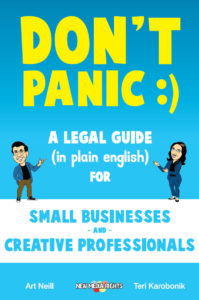 I interviewed Art Neill on my Art of Film Funding podcast about his brilliant book, Don’t Panic : ) A Legal Guide (in plain English). Art works with New Media Rights which is a non-profit, independently funded program of California Western School of Law. They provide legal services, education, and public policy advocacy for creators, entrepreneurs, and internet users. They worked with Dianne Griffin and Erica Jordan who are fiscally sponsored by From the Heart for their successful film, Painted Nails.
I interviewed Art Neill on my Art of Film Funding podcast about his brilliant book, Don’t Panic : ) A Legal Guide (in plain English). Art works with New Media Rights which is a non-profit, independently funded program of California Western School of Law. They provide legal services, education, and public policy advocacy for creators, entrepreneurs, and internet users. They worked with Dianne Griffin and Erica Jordan who are fiscally sponsored by From the Heart for their successful film, Painted Nails.
New Media Rights is also offering From the Heart readers a special 20% off Don’t Panic for a limited time. Use the code “by using this code “EHCBPZHD” at this special link to get a discounted copy.
I recommend the NewMediaRights.org website for information and I especially recommend this information packed book. Art and his team at New Media Rights are specialists in fair use and an excellent source for filmmakers. They have an APP that you can use for free that will interact with you on what is fair use and what is not. Plus, they take on fair use cases at a reasonable fee.
Art explained “transformation” of material saying that although it’s not defined in the copyright law, transformation typically means to use or alter an original work, to provide new meaning to your message. The more you transform the original work to have a new voice message or meaning the more likely it is to be transformative and the more likely it is to be fair use. So, what does a transformation look like?” Here are a few samples:
Art Neill explained the Buffy versus Edward Twilight remix video by Jonathan McIntosh. “This is a particularly great example of fair use because McIntosh takes a series of very small clips from the entire Buffy the vampire slayer TV series and mashes it to gather with tiny bits of the twilight movie to create a new original story, changing the message of the original clips from stories about vampires to a cultural critique of gender roles in vampire pop culture.”
“Pretty woman” by 2 live crew
“The rap group 2 Live Crew reused the guitar riff and some of the lyrics from Roy Orbison’s Oh Pretty Woman to create a parody of the song. This particular parity is an excellent example of fair use not only because, as the court put it, ‘juxtaposes the romantic musings of a man whose fantasy comes true, with degrading taunts, a bawdy demand for sex and a sigh of relief for parental responsibility,’ but also because of the socio-economic and racial juxtaposition between the two songs.
Reusing something in a transformative way is critical to a finding of fair use! If your reuse is not transformative it is unlikely that you will be considered fair use unless all of the other factors are in your favor.”
Information taken from Don’t Panic:) sold on Amazon $14.99 or Kindle $9.99 or NewMediaRight.org
Carole Dean is president and founder of From the Heart Productions; a 501(c)3 non-profit that offers fiscal sponsorship for independent filmmakers. She hosts the weekly podcast, The Art of Film Funding, interviewing those involved in all aspects of indie film production. She is also the author of The Art of Film Funding, 2nd Edition: Alternative Financing Concepts. See IMDB for producing credits.
by Carole Dean
Who is your audience for your film? It’s a common question that we ask of independent filmmakers submitting their documentary, feature, or short film to the Roy W. Dean Film Grant.
We find that 80% of our applications cannot correctly answer this important question.

What Do You Say When Asked to Describe Your Audience?
Some who submit to the grant say “my audience is ‘everyone’” (which I encourage you not to do). Grant judges will drop your proposal like a hot potato!
Some say “men and women from 18 to 48.” That’s too broad. We want to know everything possible about this audience. If you had a description for your typical audience member like a “soccer mom in Indiana”, we would love it.
Why should you get so up-close-and-personal and know who is your audience and know as much as you can about them? Your money for your film is now in their hands. You will need to get dollars from them for research, for production, and again for post. Plus, they will pay to download your film and probably help you put people in seats for theatrical on demand.
Ok, Carole, How Do I Find My Audience for My Upcoming Project
Start by getting to know your present audience. That is people in your database from different walks of life, who are not filmmakers, and who love the subject of your upcoming film. Be sure it’s not family or close friends, you want information from people you don’t know.
Here are some questions to ask:
- What social media platforms do you hang-out on?
- Where do you engage with people online?
- What kind of news do you pay attention to?
- What kind of music do you listen to?
- What blogs do you follow?
- What organizations do you belong to?
Knowing what organizations they belong to gives you an idea of what organizations you can join and you can begin to chat about your film online to expand your data base of names.
- How do you spend your free time?
- When you watch movies, how do you watch them? Do you go to the theatre? Do you watch movies only on your laptop or your mobile phone?
How they watch movies may mean you don’t need that expensive camera and you can reduce your budget.
With the answers to these questions, you begin to understand where you can reach other people for your new audience.
Now you know where they hang-out online, how to speak to them based on what news they read, and what blogs they pay attention to. You have a sense of how they pay attention to things. A headline from New York Times for instance is very different than a headline from BuzzFeed. Now, you have a better understanding of how to communicate with your potential audience.
Use this information to know where and how to find your audience.
Carole Dean is president and founder of From the Heart Productions; a 501(c)3 non-profit that offers fiscal sponsorship for independent filmmakers. She hosts the weekly podcast, The Art of Film Funding, interviewing those involved in all aspects of indie film production. She is also the author of The Art of Film Funding, 2nd Edition: Alternative Financing Concepts.
by Carole Dean
The key to getting your indie film funded is to master manifesting money and enhance your manifestations. In my Intentional Filmmaking Class and blogs, I teach that your mind is your greatest asset for filmmaking.

Faith funds films. Yes, it’s your faith in you and your film that brings you the money. You are the key to funding, not anyone else, so know that to start with.
Knowing how to manifest and to enhance your manifestations will maximize your film funding potential by clearing a path for its success will help you get your film made.
3 Basics of Manifesting
You must have these covered before you can move on to enhance and magnify your manifesting.
# 1 You must have a clearly defined goal. That is one sentence with a clear, concise description of what you want.
#2 You have a deadline for manifesting, tied to a holiday like July 4th or thanksgiving.
# 3 You know you can do it.
Pay Attention to Your Thoughts
Now, that you’ve got the manifesting basics down, do you honestly think you can raise $200,000.000? How do you feel when you say that out loud? Do you feel sick in your stomach? Or do you feel confident?
I have to get you to the confident stage. That comes from recognizing any blocks you have with money! Pay attention to your thoughts. Once you see old stuff come up about money, recognize it and say “that’s resistance!” and let it go.
Watch for the mind chatter saying, “How will you ever do this?” Or you say to family, “I can’t work on my script today, I have to get the car washed”….that’s resistance.
Believe in Yourself…And Have a Good Plan
It’s the plan that makes you feel you can do it.
You want to be sure you have:
- Your pitch perfect.
- Your deck for a feature or your proposal for a documentary that is very well developed.
- Your script now is a “Killer script,” not just good; it’s a knock-them-dead-script.
- The budget must be flawless and believable and the lowest you can make the film for, not the kitchen sink budget.
R vs I
You need to remove any insanity from your package. Tom Malloy calls it R vs. I. Reality vs. Insanity. It’s ok to manifest something you’ve dreamed about. But, it’s not going to happen if it’s not based in the real world.
Example, this is your first film. Your budget is $20 million and you want to direct it.
That’s insanity. Start with a low budget film. Don’t expect to raise that much money on your first film and live, for now, with being an unknown director. Reality would be a $100K budget and you direct it with a killer script.
Once you have these elements in place you are ready to ask for money.
Carole Dean is president and founder of From the Heart Productions; a 501(c)3 non-profit that offers fiscal sponsorship for independent filmmakers. She hosts the weekly podcast, The Art of Film Funding, interviewing those involved in all aspects of indie film production. She is also the author of The Art of Film Funding, 2nd Edition: Alternative Financing Concepts.
by Carole Dean
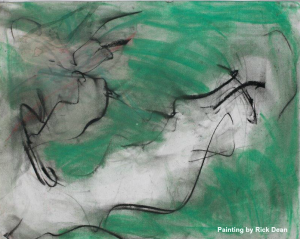
In my previous blog, Receiving Miracles, I covered 3 things that are necessary for independent filmmakers to bring miracles into their life.
- Give Gratitude Daily for the Things You Have
- Don’t Let Your Unconscious Mind Sabotage You
- Don’t Let Negative Thoughts Turn into Negative Words
Master those and you’ve got a good start. But, there are 3 more things, equally as important, to receiving miracles in your life.
The first one is very simple, but difficult for some to achieve.
Love Yourself
Yes, you need to honor who you are and give gratitude for your many talents. I talk to filmmakers daily and they are writers/directors, some are writer/producer/editors/actors/director of photography and even craft service! This is an amazing amount of talent for one person.
Realize this, you are a major talent. Loving yourself is highly important to let miracles come to you. And sometimes miracles come in the form of money.
This is where a lot of people stop money and miracles from coming to them. They don’t feel worthy. I want you to brag about your achievements. Yes, be very proud of what you have done and don’t be afraid to tell us.
At the end of each day, you go over your to do list. Perhaps you had 10 items to do that day and you only completed 3. Say, “Good Job”, this is wonderful.
Compliment yourself and say tomorrow I will complete even more and it will be effortless. Never put yourself down. Always hold yourself in the highest esteem.
Muhammad Ali was asked to give a short poem about himself. He said “Me….Whee!” So take a lesson from him and tell yourself daily “I am the greatest.” It worked for Ali and it can work for you.
Don’t Worry About How it Will Happen
Another step that stops people from receiving miracles is the “HOW.” All of us want to know how will it happen. Where will it come from? This can be a block for many people. This “How will it happen,” will act as your resistance to receiving and believing.
Your job is not to think about the HOW, your job is to know it will happen and do all the things you know you should do to make it happen. By believing it will happen you are totally open to receive.
Visualize
The next step to receive miracles is my favorite. It’s visualizing. It’s the ability to pretend like you did when you were a child when you wanted something. Often you got what you wanted and that was partially because you were visualizing it daily.
Remember when you would think about what you were getting and how excited you could get just by the visualization of receiving and using it?
You were sending joy and excitement and gratitude to the universe when you saw yourself receiving it. Emotions with visualizations are paramount to receiving. They are powerful.
Let me tell you a story of a filmmaker who is fiscally sponsored by From the Heart Productions. She is making a historical documentary film and needed to do her next shoot on location. She applied for several grants and then began prepping for the trip planning every minute of how the shoot would go just as if she had the money.
I called her just before Christmas and said what are you working on? She said her budget for the locations shoot. She was down to the penny for what to spend, where to stay, everything was ready.
I asked her, “How much do you need?” Her answer was $30,000. How wonderful, I said, you just received a grant for this exact amount! She was elated.
This is how it works, she did not ask how, she did the work, she knew she would be on locations soon and was perfectly ready to receive.
I want you to give daily gratitude for what you have now, be careful to never put yourself down and to watch your thoughts, you want positive successful thoughts. Be sure to compliment yourself daily for your many achievements and your talents, loving yourself is a priority. Next, visualize what you want and see yourself getting it and experience those great emotions of joy, success and confidence.
Believe me; this will bring you a miracle.
Carole Dean is president and founder of From the Heart Productions; a 501(c)3 non-profit that offers fiscal sponsorship for independent filmmakers. She hosts the weekly podcast, The Art of Film Funding, interviewing those involved in all aspects of indie film production. She is also the author of The Art of Film Funding, 2nd Edition: Alternative Financing Concepts.
by Carole Dean
Miracles do happen daily and especially to filmmakers. What’s the secret to attracting miracles? What do I have to do to wake up every day expecting a miracle?
You may have seen the Secret, seen some other films on manifesting, or ready my book The Art of Manifesting, and thought about attracting things to you. Perhaps you tried some techniques and it didn’t work and that’s ok.
I want to share with you some missing steps to receiving miracles. Things that work and that will make you feel good and bring more joy to your life.

To Attract Miracles, Be Grateful
The first step to receiving miracles is to realize how much you currently have and be grateful for it. Because gratitude is a powerful emotion that opens you up for receiving even more from the universe.
We need to feel how lucky we are for what we have before we start looking for more.
Try this next month, stop looking at what you don’t have and focus on what you do have and say a thank you to the universe daily. Maybe it’s for your car or your job or your apartment.
Whatever possessions you have, you need to be thankful for them. I want you to feel that “emotion” of gratitude. It’s a lovely feeling that fills your body with joy.
Please make it a daily event to give gratitude for what you received that day. Believe me, this puts you into a new mind set where you will begin to be grateful for even small gifts that come your way.
Don’t Let Your Unconscious Mind Sabotage You From Receiving Miracles
Many people have tried the law of attraction and they think they can just send out their desires with their minds and things will come to them. Sometimes this can happen.
But, to be receiving miracles daily, you need to remember you have a conscious mind and an unconscious mind. Even if your conscious mind is focusing on what you want, your unconscious could be sabotaging you.
Your mind could be harboring the unconscious thoughts that have been said to you like, “you don’t deserve money” or “you can’t raise $200,000 to make a film!” These are samples of things that could be in your belief system that are not working for your highest good.
To find these hidden saboteurs, pay attention to your thoughts. When you are thinking negative thoughts or thoughts that say “this will not happen or no, they would never agree,” you need to stop yourself, change your thoughts to say yes, this is possible. All things are possible.
Don’t Let Negative Thoughts Become Words
Remember the film The Iron Lady?
In it, Margaret Thatcher said, “Watch your thoughts, for they will become words. Watch your words, for they become actions. Watch your actions because they become habits; watch your habits because they forge your character. And watch your character, for it will make your destiny.”
So, please, watch your thoughts as they become your words. Please start listening to your thoughts and when they are negative, change them to possibilities.
Please keep your words positive because once your words are positive you feel better. This leads to a more positive character and opens you up for the universe to bring you miracles.
That’s what I want. I want you to “Expect a Miracle.”
Carole Dean is president and founder of From the Heart Productions; a 501(c)3 non-profit that offers fiscal sponsorship for independent filmmakers. She hosts the weekly podcast, The Art of Film Funding, interviewing those involved in all aspects of indie film production. She is also the author of The Art of Film Funding, 2nd Edition: Alternative Financing Concepts.
by Carole Dean
What is Game Mechanics?
Author Jonah Berger explains in his book “Contagious” that they are the elements of a game, application or program including rules and feedback loops that make them fun.

Good game mechanics keep people engaged, motivated and wanting more. They understand where they are compared to others in the same game.
You can use this to create a larger audience and increase donations to your film.
Game Mechanics Motivate on an Interpersonal Level by Encouraging Social Comparison.
People care about their performance in relation to others.
You probably belong to an airline loyalty program. Each time you fly on the airline you’ve selected, you accumulate points related to the miles you’ve traveled. There are levels to reach where the reward gets greater.
People care about hierarchy. You try and reach the top level of your airline program to get that first class ticket to Katmandu. This is game mechanics.
Using Game Mechanics to Fund Your Film
Game mechanics helps us generate social currency. Social Currency is the info we share that others find cool and want to share as well. You brag about that first class ticket to your friends. Post it on social media. It makes us and those that share it look and feel good. That is social currency.
Here’s some great ways to use Game Mechanics to increase donations to your film:
- If you are crowdfunding, you can give an award at the half way point to the person who referred the most people to your campaign. This keeps everyone working for you to win that prize.
- Or, you might have something on your web site like an Icon for how much donors have contributed to your film. You could have platinum, gold and silver classifications on your site and list donor names.
- On your Facebook page, create a message board with names of whoever donates $100.00 and over. Make up different colored name tags for different amounts. If you donate $100.00, you get a yellow tag, $300 is orange, and $500 is red tag.
Create a Simple System That People Understand and Create Social Currency
Example: Burberry let people send in photos of themselves in their coats and put them online. Everyone who posted shared it with their friends who shared it with people they knew. It drove their sales up 50%.
Word of mouth is generated through the voting process. Putting films, actors, or locations up for people to vote for works to build interest. For documentaries, try putting up questions about how people fell about your subject and letting them vote. Contestants spread the word about the site to get votes.
This is social currency and game mechanics at work.
Think of ways you can you gamify your film funding watch your donations increase.
Carole Dean is president and founder of From the Heart Productions; a 501(c)3 non-profit that offers fiscal sponsorship for independent filmmakers. She hosts the weekly podcast, The Art of Film Funding, interviewing those involved in all aspects of indie film production. She is also the author of The Art of Film Funding, 2nd Edition: Alternative Financing Concepts.
How Sharing Something Remarkable and Unique About Your Film Can Bring Attention…And Money
By Carole Dean
What we talk about influences how others see us. When we talk about cool things, others want to repeat what we’ve told them to their friends.
That is called Social Currency and you can use it to get people to notice your film.

What is Social Currency?
People want to share compelling, exclusive content that makes them look smart and in on a secret. That type of content is social currency.
Wharton professor Jonah Berger, author of the brilliant book “Contagious” explains how, by using social currency, you can get more people talking about your product or idea.
Here’s an Example
Crif Dogs, a NYC Hot Dog restaurant, has a vintage phone booth in the corner. When you enter and dial the ancient rotary phone, a voice answers and asks if you have a reservation. If you are lucky enough to have one, a hidden door opens and you find you are in a posh 45 seat exclusive restaurant no one knows about.
The name? Please Don’t Tell. It makes you feel like you found a great secret. There is no sign on the street or ads for it. It takes bookings only for each day and only at 3pm. By 3:30, all spots are gone.
The restaurant does not publish its number. It’s all word of mouth; the most powerful way to market.
Rules of Social Currency:
- People share things that make them look good to others.
- People share things that make them seem entertaining and clever.
- People use social currency to achieve desired positive impressions among friends & family.
How to Mint Social Currency for Your Film
Find your film’s inner remarkability. Give me some astonishing facts or an incredible statement I can repeat.
The Key to finding inner remark ability is to think about what makes something interesting surprising or novel. What is interesting about your film or your cast? What is remarkable about your characters? What is remarkable about the subject of the film?
How about is it fiscally sponsored?
You want to create social currency so people talk about your film and your crowdfunding campaign. You want them to say I donated to a film and I got a tax deduction. Or I donated to a film that raises awareness of Veterans suicide.
That may be what gets people to talk about your film. Then, they donate too because it’s cool to support your film and it’s cool to get a tax deduction.
By finding your film’s inner remarkability, you can use it to go viral and create social currency.
Do it right and you will end up with a different currency to use to make your film!
Carole Dean is president and founder of From the Heart Productions; a 501(c)3 non-profit that offers fiscal sponsorship for independent filmmakers. She hosts the weekly podcast, The Art of Film Funding, interviewing those involved in all aspects of indie film production. She is also the author of The Art of Film Funding, 2nd Edition: Alternative Financing Concepts.
by Carole Dean
Ok, you’ve got a great idea for a film. You’ve created a fantastic proposal and you’ve perfected your pitch. You’re next move should be to create a captivating trailer.
Now, you need a plan of attack because now you need to start raising money.

As I mention in my book, The Art of Film Funding, 2nd edition: Alternative Financing Concepts, there are so many things to do when you start to make a film. You need to know the order of your priorities because they come at you from every direction. When you just work with these immediate items you can see the light at the end of the tunnel.
You must have a fantastic trailer to make money. So, how much is that going to cost you? For a doc your budget should be around $10,000 and for a feature about $20,000. This must be your first and foremost goal, especially for a documentary, after you get your proposal and pitch to a brilliant level.
Alright, Now How Do I Get The Money?
Fiscal sponsorship is a great foundation to build your fundraising. I know because my non-profit, From the Heart Productions , specializes in fiscal sponsorship for filmmakers. We’ve helped them raise millions for their films.
Under fiscal sponsorship, you will align your project with a non-profit that will give your donors a tax deduction for the money they donate to your film. That means more and perhaps larger donations.
When filmmakers apply to From the Heart Productions for fiscal sponsorship, they’ve got a choice on how to get paid. We tell them that if their checks are to be made to them personally we must issue a 1099 at the end of the year for miscellaneous income. Or, they can get an LLC.
The LLC filing at www.ehow.com is inexpensive. You can get one online under $300.00. You can also get a DBA (Doing Business As) from the city you live in. It’s even less money. Both of these take about 4 to 6 weeks to complete.
You Mentioned Something About a Plan? Right?
1. Start by getting your bank account. Where’s the money to open the account? Try your mother or grandmother and tell them you need this to become an entrepreneur.
2. Now, you’ve got a film bank account and/or an LLC or your DBA, so you are a real company. Find a fiscal sponsor that you like, that supports filmmakers, will give you help, and be available to answer any questions you may have.
Did I mention that From the Heart is a great fiscal sponsor for filmmakers? Ok, maybe I’m prejudiced. But, it does fit perfectly the necessary criteria I just listed because From the Heart Productions was created specifically to help filmmakers get funded. We’ve done a really good job of that too for the last 11 years.
We are constantly putting information on our web site to help you raise money. We also review your proposal and your trailer and tell you the honest truth about your chance for success and we give ideas to improve what you have.
You really need this. You are out there in a vacuum and you need people who see hundreds of proposals and know what grantors want. This is where a thick skin is required.
I know from talking to hundreds of sensitive artists that we’ve fiscally sponsored or who’ve applied for our Roy W. Dean Film Grant that when you start telling them that their favorite scene in the trailer doesn’t work; most of them just grin and bear it. They don’t have to take my advice, but many do.
In fact many people just apply for the grant to find out what we think of their materials. That’s a very good thing to do. I recommend you apply for lots of grants and get feedback, that’s how you learn to improve your work.
When looking for a fiscal sponsor, say to yourself, “What’s in it for me?” Make sure you feel you are getting something for your 5 to 7% fee.
3. Time to start building an audience and network of potential donors. Facebook is a must to fund your film. Create a fan page for your film. Use their landing page to advertise your film and collect fans. Start a dialogue. Try out artwork, ads, and even ask for advice.
Use Google to search for organizations, website, bloggers, and forums on your subject matter. Post on these forums and reach out to the bloggers. Get information out about your project and send people to your Facebook page and web site. Try to get as many people that are interested in your subject to join your page.
Read my blog, Mining Your Audience for Gold as another way to discover who your audience really is.
4. Create a budget for the trailer. See the chapter on film budgets by award winner Norman Berns that I’ve reprinted on our website. Check out Norman’s site www.reelgrok.com and Maureen Ryan’s www.producertoproducer.com site for sample budgets for features and documentaries. Stay focused to get that brilliant money-making trailer made.
5. Set up your email names on an email marketing site. You want to stay in touch with your donors every other month by always giving them the latest and greatest news on your film. I use www.constantcontact.com. They are very helpful. (work with a fiscal sponsor that already uses Constant Contact and you’ll get a discount).
Don’t think its way above your level to create a fantastic newsletter, it’s actually easy.
6. Decide how best to use your time. Morrie Warshawski, author of “Shaking the Money Tree” draws a circle and says you usually get 60% of your money for docs from people. So, how much time do you want to put into people?
If you decide to put 50%, then cut the pie in half and write PEOPLE. Next how much time to you want to spend on grants? Is your film a good fit for a lot of grants? If so, put 20% GRANTS. How about Corporate donations? What amount of time do you want to give that? Put it on the chart.
Letter writing is a brilliant way to get money. Funding parties can bring you people to support your film and money. Chart it out and tell yourself what you will do with your time. If you are making a feature then you know it’s 100% from people. I don’t always recommend a trailer for features for many reasons.
7. “What’s in it for me?” Crowdfunding platforms like Indiegogo have shown us how much people will give if they get something back. We always knew it was all about, “what’s in it for me” and they are using that gift to the donors to raise tons of money. So, think about what you can give back to your donors and put it on your web site and your Facebook page.
Example; an Indian man I know was making a film called Bollywood to Hollywood. In our brainstorming session, he revealed that his mother and brother are excellent cooks. So we set up a price for him to come to your house and cook an authentic Indian dinner for 6 people. Use the idea of your film as much as possible and create gifts around it to make people want to gi ve you the larger checks.
8. Now you need to collect some sponsors and partners for your film. This means you look for nonprofits that are supporting your same issue. Kitty Farmer was making a film on the healthcare, or lack of, that the US Government promised the American Indians. She calls it her circle of partners. She focused on this for several weeks and each day got on the phone and pitched her film to like-minded organizations and she came up with 20 organizations who want to support her film.
How does this help you? Well, if each organization has 2000 members or more multiply that by 20 and now you have a large data base of people who care about your issue following you. Your job is to keep them informed with your newsletter or email blasts of the status of the film while you are making it. Your real support will come when they can see some of the content of the film and fully support you. Always list these names on your grant applications and on your web site as strategic partners.
Finding these people is easy. Start with some of these nonprofit web sites like www.guidestar.org and www.councilofnonprofits.org for the subject matter of your film. Each organization has instructions on site to help you. Then, get on the phone and pitch that brilliant money making pitch you created.
You want them to know you are making this film and usually the first contact is to introduce yourself and tell them about your film.
Remember, they don’t know you from Adam and this is your first contact. They don’t need you, you need them. At this point only ask if you can keep them informed about your film as you make it. Once you have a trailer to show them then send that and keep your contact going until they learn more about you and trust you. Then they will put you on their web site and mention you in the newsletters, etc
9. Now you need the money to make the trailer. Your platform is set, you have a bank account, a pitch and proposal, sponsors, web site, Facebook page, perhaps a blog and you have people connected to you and your film. That’s perfect.
Review your time table telling you how much time you want to put into each area of fund raising. You may want to focus on the PEOPLE section first. Decide if you want to call people to donate to a yard sale, create a funding party or a dinner funding party or do a letter campaign. Make plans, set dates for these events and start your first funding adventure.
10. You may want to listen to my online information on Manifesting and creating your future at www.fromtheheartproductions.com it’s very important at this phase to be able to receive. You want to be sure that you are functioning at the highest level possible and as Dr. Chopra would say that you must know there are “infinite possibilities” waiting for you.
11. Before you shoot anything for your trailer, I recommend you have a consultation with a trailer editor and find out just what he/she advises you to do to get what you need before you go out to shoot.
12. When you shoot your trailer you will have an outline of just what you want before you shoot. After your trailer editor is finished, add this trailer to your web site and post daily about producing the trailer in your blog.
Consider creating a 90 second trailer for sponsors to put on their web site to send people to your site. Now you are really networking. Remember the people reading your web site and blog don’t know that filmmaking is 90% hard work and 10% filmmaking. So dazzle them with production information so they keep coming back to your site or Facebook page. Then tell them where you are now in the funding process and make another “ask” as you need more money.
13. Look for development money from places like www.sundance.org or http://www.thefledglingfund.org or www.chickeneggpics.org and go to the back of the book for a list of funding organizations.
14. Celebrate you have just reached your first milestone. The rest can be a piece of cake.
Remember, it’s the journey not the destination. Enjoy every moment.
Carole Dean is president and founder of From the Heart Productions; a 501(c)3 non- profit that offers fiscal sponsorship for independent filmmakers. She hosts the weekly podcast, The Art of Film Funding, interviewing those involved in all aspects of indie film production. She is also the author of The Art of Film Funding, 2nd Edition: Alternative Financing Concepts. See IMDB for producing credits.
profit that offers fiscal sponsorship for independent filmmakers. She hosts the weekly podcast, The Art of Film Funding, interviewing those involved in all aspects of indie film production. She is also the author of The Art of Film Funding, 2nd Edition: Alternative Financing Concepts. See IMDB for producing credits.
Use Your Knowledge and Intention to Get Films Funded
by Carole Dean
In the beginning was the word…..
I am lucky to be able to teach indie film funding in our Intentional Filmmaking Class with actor/writer/producer Tom Malloy. Tom is owner of Trick Candle Productions and part owner in Glass House Distribution. He has raised over $25 million for his films as well as having produced Screamers, In Vino, and Fair Haven.
We both believe that your mind is your greatest asset for filmmaking.
 In a recent episode of my podcast The Art of Film Funding, Tom covered How to Devlop a Feature Film From Scratch.
In a recent episode of my podcast The Art of Film Funding, Tom covered How to Devlop a Feature Film From Scratch.
“Everything you can see was an idea at one time” he started,” that chair you are in, the computer you are using, everything in your room started as an idea.”
“When you get a compelling idea for a film he says you should feel the energy of the universe in it. That’s when it can be powerful. That’s when it’s worth the time to seriously consider it. You need to be completely sold on this idea and know that it can be made and you are the one to make it.”
Once you feel an idea this strongly you need to get it on paper. Moving that thought from your head onto paper will start the process of bringing your film into this third dimension where you can birth it. Pull out your notebook and start to write about it. Put down all the information you get.
Then start considering, is this something that I could really create, is this for me? Start visualizing yourself making the film and see how it feels. If that works then go to the next step start to develop it.
Most importantly, don’t tell anyone about this in the writing stage. Keep all of that energy inside you and use it to create. You are not ready for rejections. Just use this energy for creating.
I know from reading many applications to the Roy Dean Grant that this is where the rubber hits the road. Many people have ideas and only a few have really developed them.
Tom puts his full attention on the project when he gets that idea and feels the universe is behind it. Documentaries and features. He stays on the project while the energy is there and he knows that it will work.
This has helped him make many films. The secret seems to be, “is this project for me?” “Is it worth my full time and attention over everything else in my life?” It’s either dive in with 100% dedication or let it go. Only you know the answer.
In our Intentional Filmmaking class Tom and I take people by the hand and walk them through the funding and the attachment process. It’s amazing to watch how filmmakers develop themselves while developing their film.
Our next class starts in late September 2016. I teach the Trailblazer Class for documentary filmmakers and Tom is my co-instructor for the Mastermind Class for Short and Feature filmmakers. Full information is at https://fromtheheartproductions.com/intentional-filmmaking/
If you are passionate about your project this class will take you to the next level.
LinkedIn Groups are Great For Sharing Filmmaking Info, Getting Tips, and Finding Work
by Carole Dean
Independent filmmakers seeking for social networking opportunities should not overlook LinkedIn Groups. (And no one should overlook LinkedIn now that Microsoft paid $26 billion to purchase it).

There are groups to join for documentary, feature, and short films as well as crowdfunding and financing.
On my weekly Art of Film Funding Podcast , I was lucky to spend some time with a cherished friend, Norman Berns, an Emmy award winning producer who is head of the LinkedIn group for Film & Television Professionals. They now have over 200,000 members.
Norman shared with me his insights and tips on how best to use LinkedIn Groups.
Why should filmmakers join online groups?
“Why do people go to the town square and hang out for the evening? You do it because that’s where the people are.” suggests Norman.
“If you want to find out from filmmakers, where do you find a whatever, anything from a prop to a location to a producer, those are the people you would ask. And if you sell it well enough, if you present the information well enough, you’ll get a good answer.”
What should you do when you join a LinkedIn Group?
“Alright, we have this town square”, said Norman “If you rush into the town square and you say, ‘I’m here, I’m here, look at me,’ people will wander away. You have given them nothing.”
The best way to start is to share something that you learned. Share your experiences in filmmaking. The easiest thing people can do in groups is to share knowledge and come off as the wisest person in the room.
How can you get people to give you advice on your film?
If you want people to look at your film, if you want to utilize the group, explain what you did.
“Say, ‘Look, we had to go to this location, we only had xxx dollars. We climbed a mountain. We used this camera and these lenses and we put the camera “here”. You tell me how difficult it was to film in this location. Then I’m interested.”
But, just saying “Hey, look at my film!’” Norman warns, “Doesn’t work well.”
So, if you’re free with information, if you give, before you ask to get, you will get a good response.
How do you market yourself and actually make money for a professional4 service in a group?
Norman said his group has a lot of people in it who work closely with story structure, who teach writing, who talk about protagonists, antagonists, all the pieces that make up a good story. They’re really incredibly generous and some have workshops.
But, if you want to get people into your workshop, you have to set out a lot of breadcrumbs of wisdom to attract them. As they come in picking up all these bits of knowledge you’ve laid out, they will eventually come through your door. It takes some effort.
This is the helpful and the respected way to promote yourself online in groups. Then you can tell people when you have a seminar and you have a much better chance to get customers.
How do you promote your talents to get work?
Norman’s advice is to answer: “Who are you? What are you talking about?”
“If you come to me and you say, ‘I made a film for $20,000. I had these people in the cast. We shot for these many days, and I used this special crane that I had my grips build.’
Well, all of a sudden I really am interested, I really want to know.”
The people who say, “hire me, hire me”, are missing the point.
“If I like what you’re telling me, if I like the product that you’re delivering, I’ll hire you. But, I’m not going to start the conversation by hiring you, and then figure out whether I like your stuff.”
Can you talk about funding for your film?
Norman said that he limits this discussion to technique rather than making an “ask” from the group.
What’s fair and acceptable is for someone to say, “If I were looking for money for my film, where would I go?” That’s worthy of a discussion.
“But please do not say,” Norman chides “Go to my Indiegogo campaign and donate!”
You can check out the entire Art of Film Funding podcast with Norman Berns for insights on LinkedIn and producing.
Carole Dean is president and founder of From the Heart Productions; a 501(c)3 non-profit that offers fiscal sponsorship for independent filmmakers. She hosts the weekly podcast, The Art of Film Funding, interviewing those involved in all aspects of indie film production. She is also the author of The Art of Film Funding, 2nd Edition: Alternative Financing Concepts.
Let Go of These 5 Myths to Raise Money for Your Film
by Carole Dean
The reward for crowdfunding your film comes not just in money, but knowing that others support you and your work.
At From the Heart Productions, Carole Joyce and I work with filmmakers to help them create their own unique crowdfunding campaign. We provide lots of crowdfunding resources to engineer a successful campaign as well as fiscal sponsorship that allows tax free donations.
But, the campaigns we help only succeed when we’re able to get filmmakers to let go of these crowdfunding myths:

Myth 1 – You build it and they will come.
Nonsense. No matter how fantastic a campaign page you create, how important the cause, or how great the concept, you need to bring your crowd to the crowdfunding campaign. You will probably get 98% of your funds from you own email list. Not from Facebook, Twitter, or any of your social networks. Just from people you know.
Getting your crowd to send your emails to their friends is paramount to success. Focus on how to ask ahead of time for this favor and find ways to reward people for sending your emails to their lists.
Myth 2 – My film’s budget is $85,000 so that is where I need to set my campaign goal.
Your film’s budget has nothing to do with where you should set your campaign goal. Raising money is not easy so why set your goal for an amount you will have trouble getting. Break it up into achievable segments.
How to know what you can raise? Use the number of names in your data base and multiply by 5% for the number of donations you will get. Example: Let’s say you’ve got 1,000 names. 1,000 x 5% = 50. So, you can expect 50 people will give you money.
At From the Heart, we have an average of $100 per donation. That means for 50 donors you can raise $5,000.00 (per those 1,000 names).
Don’t plan on getting much from your name on your social networks. Only about 2% of your social media contacts who will donate. Still, you want to be on Facebook, Twitter, and other social media to bring attention to the project
The money is in your close friends, family and your data base. Focus on your data base where you can send emails every 5 days. These are your prime donors.
Myth 3 – I’ve got 45 days reach my goal so I can take my time.
You may have a 45 day campaign, but it’s critical to hit 30% in first 72 hours. If you hit that, your campaign has an 80% chance of succeeding.
What amount can you raise in 3 days? $3,000.00? You may want to work backwards and use this calculation to set your ultimate goal. If you think you can raise $3,000 in first 3 days, then you ask for $9,000 and you can probably hit it.
Lots of work? Yes, but the payoff is more in marketing than you would ever imagine.
Myth 4 – If I don’t hit goal, I still get money so that’s ok, right?
Hitting your goal is essential. The record of how your campaign performed and how it was accepted by others will be out there forever. While not necessarily an accurate judgement on how successful your project will ultimately be, it will be seen by some that way.
Distributors want to know you understand social networking. They think crowdfunding is an example of how good you are at marketing so they judge you by your success. Be prepared for this.
Myth 5 – T-Shirts make great perks.
I like gifts that are personal and I like you to be part of the gift. Send me something personal. One filmmaker crowdfunding wrote a poem for those who donated to his campaign and he was very successful.
Make your gift something that sets your project apart and makes other take notice. One crowdfunder asked his potential donors, “Where is your dream vacation?” Then, he took a picture of you and put you in that location. He did very well because people posted these items on Facebook. That got him new leads who eventually donated because of the extraordinary gifts.
Need a Consultation?
Tailoring your campaign to your film is essential. We can do that in a consultation. If you are fiscally sponsored by us, you have a free campaign consultation.
If not, arrange a consultation with me. I will read all of the materials of your film. Then, we spend 40 minutes discussing your campaign with you.
Whatever you do on your campaign, let go of the myths and you will be much more successful.
Carole Dean is president and founder of From the Heart Productions; a 501(c)3 non-profit that offers fiscal sponsorship for independent filmmakers. She is also the author of The Art of Film Funding: Alternative Financing Concepts. Her Intentional Filmmaking Class teaches filmmakers on how to get their films funded.
The US government gives filmmakers a great gift at the end of 2015 in the recently signed budget
by Carole Dean
Just before Congress dashed out for their end of year holiday vacation, Section 181 of the tax code of 2004 was reinstated. For a filmmaker, this is going to be an important tool to attract investors.
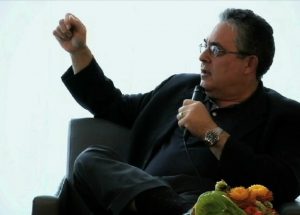
Enacted originally in 2004, Section 181 allows you to eliminate your investor’s tax bill by what they’ve invested in your film. It permits a 100% write-off for the first $15 million of the cost of producing a film in the U.S. It had expired at the end of 2014, but Congress instead extended it to the end of 2016 and made it retroactive to the beginning of 2015.
Entertainment lawyer, Corky Kessler, is one of our best film attorneys, an expert on Section 181, and one of its biggest advocates. He has used Section 181 seventy-four times to help filmmakers. He revealed more highlights and new benefits of Section 181 during my interview with him on my Art of Film Funding Podcast.
Section 181 is for shorts, documentaries and features up to $15 million and some up to $20 million dollars.
It covers all films started or finished in 2015, if you know how to apply for it. Section 181 also can cover films that finish in 2016.
How it works. For example, if $500K is spent on your film in 2016 and your investor is active in the production or made active, they can write it off as an expense against their taxes. If that investor is in a 30% tax bracket, they will save $150K from that $500K investment.
That is because you can create 100% of a tax loss when you invest under Section 181.
Depending on what state you decide to film in, you can minimize your investors risk considerably.
For example, let’s say you are shooting in a state with 40% state rebate your investor is using Section 181. If that investor is in the 35% tax bracket, then they could have an assurance that 75% of the money is returned to them.
States like Georgia, Louisiana, California and NY all have great incentives. To protect your investor Corky, recommends finding a state to shoot in with a good incentive. Some states like Louisiana allow you to bring people in to work on your film from out of state and you still get 30% benefits.
Section 181 is fairly simple if you have a good lawyer and accountant who can advise you on how to use it.
If your accountant is not well versed in Section 181, you can lose this benefit. For example, if the accountant capitalizes the production expenses you can lose this. Also, if your accountant does not file in the first year that you intend to use the 181, you cannot use it. Knowledge is the key to using this.
Also, for the first time, Section 181 includes theatre. Certain rules about theatre are still to be revealed. The good news is that you have until the end of 2016 to get your projects grandfathered in case this is not extended again.
Get started before you do your taxes.
“If you want to use 181 for an upcoming film you need to complete a form this year when you do your taxes.” Corky explained. “This form tells the IRS that you intend to use it for your film to shoot in 2016. That’s the most important thing to know now before you do your taxes.”
You also need to have your paperwork completed for the film. Your lawyer will know what papers are required. Put aside a week to get these done so that you can file that extension and be eligible for this great tax incentive offer for your investors.
You can contact Corky via email at kessler@dlec.com and or call him at 312 853 8448 For an accountant, he recommends Todd Hein with Crowe Horwath who knows how to do the election and file properly.
Carole Dean is the president and founder of From the Heart Productions and author of The Art of Film Funding, 2nd edition: Alternative Financing Concepts. She hosts a weekly podcast, The Art of Film Funding, with guests offering tips and advice on indie filmmaking.
Her unique, innovative Intentional Filmmaking Class teaches filmmakers how to get their films funded. Corky Kessler is a guest speaker for the class. New classes begin February. .
by Carole Dean
When 16 year old Chris Strachwitz left Germany and came to the US in 1960, he played his radio every day because he was so impressed with the music in America. He loved it all!
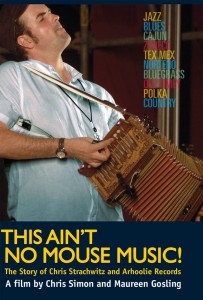 He listened to Mexican music, soul, and blues, jazz and accordion music. Chris developed a very good “ear” for music. He knew how to discern talented people. But, many of the artists he liked were older musicians whose work would be lost when they went away.
He listened to Mexican music, soul, and blues, jazz and accordion music. Chris developed a very good “ear” for music. He knew how to discern talented people. But, many of the artists he liked were older musicians whose work would be lost when they went away.
He decided to dedicate his life to record them to save their music.
In the documentary “This Ain’t No Mouse Music”, we follow Chris from teenage music lover to a restless archivist who discovered and preserved the work of many great songs and artists.
He started on a shoestring. He began to record music exactly where he found it. In front yards, restaurants, bars, by the lake. Wherever the musicians played, that’s where Chris recorded them.
Chris never had a studio. He never wanted one. He wanted to record the music just where he found it. This brilliant idea really worked, you can hear it in the recordings. It’s natural and the outside or surrounding sounds belong.
Music was the life blood in the heart of these deep rooted communities. People loved their music and loved their musicians.
Chris started his own record label Arhoolie Records. Arhoolie is the word for a field hand in the south. He became a folk, blues and soul music detective combing Texas, Louisiana & Mississippi for musicians and also for local records.
During his search for music, he found folklorist Mac McCormick who became a brilliant partner to help Chris in his quest. Chris & Mac were not afraid to ask anyone for the names of musicians. Once they had a name, they used their detective skills and went to work to find them.
This desire to find folk music in the South would cause him to find some of the greats. He found Fred McDowell, Aakka White, and Big Mama Thornton, who sang Hound Dog and I Smell a Rat.
He found Richard Thompson, John Jackson, Mance Lipscomb, Charlie Musclewhite and Big Joe Williams whose great song is Sloppy Drunk!
Chris took many of these people to the folk festivals and on tour to either create or resurrect their careers. He took Big Mama Thornton overseas where she recorded on of her best-selling record Big Momma Thornton – In Europe.
He recorded Country Joe and the Fish singing their anti-Vietnam War song I Feel Like I’m Fixing to Die Rag. Chris recorded this in his home and when they were leaving they said, “What do we owe you for the recording?”
“Well, you don’t have a publisher,” Chris replied “So, let me be the publisher.”
They signed a contract which brought Chris a lot of money. Chris used this income to cross the country and find us these marvelous musicians. Years later, when they next met, Chris gave the publishing rights back to the artist.
Chris is a one-man-band by finding the talent, producing, recording, editing, marketing, selling and promoting. He even shows you how to wash your records!
If you love music, musicians and good bio pics, this is a wonderful film for you.
Songs truly are the poetry of the people…
The podcast Dissecting Docs with Carole Dean and Don Schwartz is dedicated to our most precious and beloved filmmakers, the documentary filmmaker. Each week, the show honors these brilliant creatives who give of their time, energy, and sometimes their freedom to bring us the truth. They are our last vestige of sincere, unbiased reporters who put their heart into their films.
Creating a Marketing Plan Early Can Increase Donations and Help Target Audience
by Carole Dean
In the Intentional Filmmaking Class on film funding that I teach, I usually start with marketing. It’s something filmmakers often overlook until the film is finished.
I know from working as a fiscal sponsor how marketing your film early brings you money for donations, major discounts, and in-kind donations.
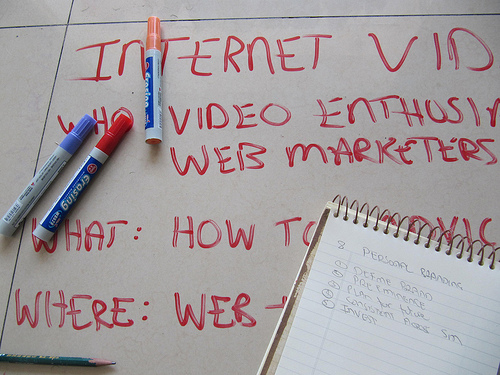
But, I believe if I was on a stage and my class was sitting in front of me, they would be throwing things at me (well, it’s an online class so maybe they are throwing things at their computer screen!). Filmmakers don’t want to hear the fact you need to market your film while you make it.
On my Art of Film Funding Podcast we interviewed Sheri Candler, a film marketing genius, who shared her brilliant, clearly outlined concepts.
Sheri explains how and why you need to identify your film’s market during the early stages of production.
Why You Need to Start Focusing on Marketing in Development
“I understand this seems like a business thing that they don’t really want to get involved in,” Sheri says referring to the block creative people put up when dealing with business matters.
“But what I normally say to them is, if you are planning on having a career beyond this project, you need to pay attention to marketing because part of show business is not just the show, it’s also the business.
“You want to get money to make your projects, you want people to see your projects and you want to be able to make other projects, so you have to face the marketing and distribution questions that go with your project.”
Why You Need a Marketing Plan to Create a Strong Budget
Sheri asks that filmmakers need to realize that they are not just making a movie for themselves. If that were the case, it would be a hobby or something to put on shelf to look at.
If people are making it for people to see, you need to know who those people are. Who are you making your story for?
“Because you won’t be able to reach them if you don’t know who they are, and that is really the basis of what marketing plan is.
“It identifies the audience that you need to reach, and explains how will you reach them and what’s the budget you need to do that. You want to connect your work with the audience that you hope will watch it and enjoy it, and spend money to see it and tell other people about it.”
How Working on Marketing Early Will Help Film Reach its Audience
As Sheri explains, “there is just so much competition these days for the audience of the film.” Filmmaking has gotten cheaper, the equipment has gotten cheaper and the ability to edit and even to distribute your film is cheaper too.”
“But it also means so many more people are doing it, so we have this glut of content where there is just tons of it in the world and it’s very difficult to just release a film and hope it does something for you.”
“It isn’t enough to target men or women or even an age group like 18 to 35. You need to know exactly who your story is going to appeal to and describe these people.
“There’s got to be something at the heart of and at the emotional core of your film and you need to start from there.”
Marketing Questions You Need to Ask Yourself about Your Film
Sheri provided a list of essential questions filmmakers need to ask as they embark on marketing their film.
What is it about your film that is attractive, not just genre wise, but attractive to the kind of people who like this story?
Why are you attracted to this story?
What is about you that wants to tell it? Start really identifying those things in yourself like:
Where do I like to hang out?
What do I like to read?
Where would I go on vacation?
What would I wear to the premier of the film if it wasn’t mine?
With these answers you can start to find those communities where you would go online and it would be much easier for you to join them because you are like them.
“It is very authentic and human rather than the advertising base model that we had for so many years which is: I make a film in secret, and then I throw it out into the world and try to advertise my way into an audience.
“Hollywood still does that, very much so, but a low budget independent film cannot do that, will not have the funds to do that, so they can’t even approach their filmmaking from that perspective.”
Carole Dean is the president and founder of From the Heart Productions and author of The Art of Film Funding, 2nd edition: Alternative Financing Concepts. Her unique, innovative Intentional Filmmaking Class teaches filmmakers how to get their films funded. New classes begin September. Discount for early enrollment.
by Carole Dean
When can you use Songs, News Clips, and Plays in Films
You know that song you hear that you can’t get out of your head?
What if you can’t get it out of your film?
Then, it becomes a question of fair use and a question for entertainment attorneys Michael Donaldson and Lisa Callif (who happen to be the leading authorities on fair use).
While they were both guests on my podcast The Art of Film Funding , I asked Lisa an important question I hear often in my Intentional Filmmaking Class.

If a documentary filmmaker is shooting a film and a song is playing in the background of the location is it possible to claim fair use and if so for how many seconds?
“That answer has a couple of questions, “responded Lisa “depending on how the music was captured”
Incidental vs. Non-Incidental
The first example she gave is of a filmmaker shooting in a bowling alley and music happens to be playing in the background.
“If you capture it completely incidentally and you don’t edit the scene to the music, it’s just there, the filmmaker, as a director didn’t make any creative choices about the music, it probably is going to be fair use under our incidental tests.”
But, if is not incidental?
“If the filmmaker had any creative decision to what music was being played or how long it was being played, how loud it was, then it wouldn’t be fair use. It’s a little different, it’s a lot different than our three step test, it’s really isn’t incidental use, purely incidental or not.”
Incidental vs. non-incidental is a very important part of the fair use doctrine.
Michael and Lisa just worked on a fictional film by a very famous director which was shot outside a music festival. A lot of the music from the festival bled through during the shoot into the dialogue scenes. There was no way to separate it out.
“We said it was fair use as long as it was contained only as background.” Michael answered. “as they were talking not used as any kind of underscore which was what Lisa was talking about earlier. Using somebody else’s stuff as underscore is never fair use in the US.”
What about using news clips in films?
Another question filmmakers in my class ask is about using news clips in their films. Can they claim fair use or should they buy them?
“The test is exactly the same.” responded Michael referring to the incidental as opposed to non-incidental qualifier. “That test isn’t just for feature films or just for photographs or just for sculptures, it’s for anything you use in your film and documentaries often use news footage.”
He pointed out that a filmmaker needs to avoid the temptation of using news footage to tell or advance a story. That would not be allowed under fair use. The news footage needs to illustrate the story.
“You can’t get lazy and say, I will just stick in the ABC story that night that says: So and so got killed. You have to make that point by some interviewee or someway, and if it is appropriate, you can tell it straight from the news footage. A lot of the docs we work on use news footage, it always has to illustrate or support a point you are already making.”
Is it possible to film a theatre play and claim fair use?
Yes, if the use of the play is to illustrate your point you are making.
A documentary they were assisting was about a local theater that showed how the creation of one of their productions. It started with casting of local talent, building sets, rehearsals, etc. Songs were used all the through. Then, they go to opening night which, of course, is an actual production of the play.
But, it turned out that was ok to use.
“If you have to make a documentary what it’s like for a local theatre to put on a musical, you can’t tell that story without showing something of opening night.” Michael explained.
“You just have to make sure that you don’t overdo it. You are not substituting footage for entertainment value, but rather to show what it is like, when local people, non-professional decide to put on a major Musical.
“We did a wonderful thing for Michael Yuri, he runs a contests in Texas… where high school students read scenes from famous plays. Obviously, if you are making a documentary about this phenomenon in Texas, you show them reading the scenes.
“There is a lot of circumstances with excerpts from plays, but the rules are exactly the same: Plays, music, film, broadcast television, cable shows, architecture, photos, the rule is:
“Are you using it to illustrate the point you are making, the use is reasonably appropriate and is that connection clear?”
Carole Dean is the president and founder of From the Heart Productions and author of The Art of Film Funding, 2nd edition: Alternative Financing Concepts. Her unique, innovative Intentional Filmmaking Class teaches filmmakers how to get their films funded. New classes begin in September. Discount for early enrollment.
3 Questions To Ask When Using Material From Other Sources in Your Film
by Carole Dean
Entertainment attorneys Michael Donaldson and Lisa Callif are the leading authorities on fair use. Michael, in fact, is often referred to as the “fair use Guru”. His “Clearance and Copyright” is used in over 50 film schools and has become the standard reference book for the industry.
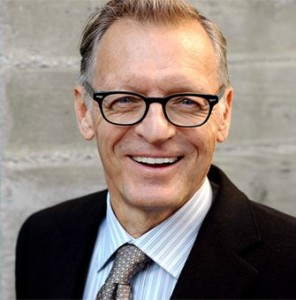
I interviewed them recently on my podcast The Art of Film Funding and Michael provided me with insights and questions that a filmmaker should ask about fair use as it relates to their film. Once you have the answers, you can use fair use comfortably in your film.
Michael says you need to ask these three questions:
- Are you using somebody else’s material to illustrate a point you are already making in your documentary, pretty simple- yes or no.
- Did you only use what’s reasonably appropriate? That’s got a lot of elasticity in it and that’s good.
- Is the connection between the point you are making and the material that you are using illustrated clearly to the average viewer?
“If you get a yes to all three questions,” Donaldson says, “you land up in what we call a Safe Harbor. It’s unassailable. There is no way anybody is going to successfully argue that it’s not fair use.
“There is still a lot of fair uses: You know if the connection isn’t all that clear but when you explain it, it’s there, if you have a little bit of wobble room in the length that still might be a fair use, but it is not that solid safe harbor where nobody can get you.”
You may remember there was a lot of publicity lately about the film, “Los Angeles Plays Itself” saying that no one thought it could be released on DVD. The documentary was made up of clips from other movies showing how Los Angeles was portrayed in each one.
Michael Donaldson got involved and cleared it. I asked him about this film how he was able to clear it.
“It’s funny because this was far from the most difficult film that we have had by a long shot. It was a good example of the three questions.
“Thom Anderson (the writer/director), from start to finish talked about how Los Angeles plays itself in movies and he would mention specific films. And as he mentioned the films, clips of those films played over his voice.
“You never see his face the entire film. What you see is clips from all these movies and they just keep rolling for 90 minutes. Clips from other films, but each one separately, individually, is an illustration of what Tom Anderson is talking about so it’s a classic case for safe harbor fair use for each and every clip in that film.”
I asked Donaldson if this was a good film for us to watch to visually see what is Safe Harbor for fair use.
“It’s a very good film to watch for very safe fair use. Another one is “Room 237”, where 1/3 of the film is clips from the “Shining”, but each clips illustrates exactly what the interview subject is talking about. Very safe.”
Michael Donaldson’s “Clearance & Copyright” is available as an ebook with film clips to support his simple as 1-2-3 questions. It also comes with many downloads of contracts and agreements you need for your film. http://www.donaldsoncallif.com/books
Carole Dean is the president and founder of From the Heart Productions and author of The Art of Film Funding, 2nd edition: Alternative Financing Concepts. Her unique, innovative Intentional Filmmaking Class teaches filmmakers how to get their films funded. New classes begin in September. Discount for early enrollment.
How do we see our future and then meditate it into being?
by Carole Dean
Back in the 70’s I was a big fan of Rajneesh, an Indian mystic who taught the importance of self-awareness, meditation, and creativity. (That was before he moved to the US and became addicted to Rolls Royce’s.)
One of his saying that stayed with me the most is:
Sitting silently, Doing nothing
Spring comes and the grass grows by its self
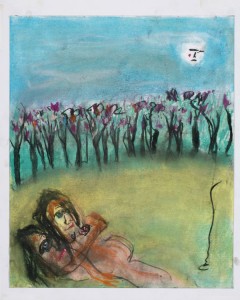
Wait a minute! What about working to till the soil, plant and water the seeds? You mean that you can sit and think about the grass growing and it does? Or, are you saying that your mind can control things? Are you saying that we have the power to imagine something and actually cause it to happen? Could this be true?
This is as good as a Koan. (a paradox to be meditated upon that is used to train Zen Buddhist monks to abandon ultimate dependence on reason and to force them into gaining sudden intuitive enlightenment)
Then, there is the great Bible saying,
Luke 12:27: “Consider the lilies of the valley, they toil not nor do they spin, yet even Solomon in all of his glory was not arrayed like one of these.”
What does this mean? That we can have what we want by just being? Or is it because the plant knows who it is or what it is, it just becomes its self? Is it possible that we are much more than we realize? Do we have powers that we are not using? Can we sit and meditate on something we want and bring that into our future?
Jack Canfield, author of the inspirational book “Chicken Soup for the Soul”, held a funding party at his home for a filmmaker we sponsor at From the Heart. During a break at the event, I ended up in the kitchen alone with him and he told me that when he moved into this multi-million dollar home he had no furniture at all.
He and his wife took a leap of faith. They bought the house and knew they could furnish it properly with future income. Now, they had so many works of art that they have to store half of them and rotate them in and out of the house.
He is also the same author who “decided” to sell a million copies of the first Chicken Soup for the Soul book. The story goes that he began to meditate on selling a million copies. He saw himself incredibly rich and successful from the sale of this book. Fast forward to one day when he was speaking at a book signing and a saleswoman for the National Enquirer said, “Why not run an ad with us?” That did it. That took him to the sale of the million books.
So, how do we do this? How do we see our future and then meditate it into being? How can we use our minds to create our future? We know the possibility is there because you hear it at every Academy Award ceremony,” I envisioned myself receiving this award when I was 5 years old and now, here I am.”
Is it an inner knowing that you can do this that makes it work? What if all of us could do this? What if we had the power to intend something and actually make it happen? Then we could fund our art, have a great time with our family and make an excellent living. Actually, there are a lot of people in the film industry who do just that. So where do I sign up? What’s the first thing I need to do?
Perhaps it’s as simple as believing that you can do it. Perhaps the grass grew by its self because it knew it was grass and knew intuitively how to grow. Perhaps the lilies knew what lay ahead for them; they saw themselves in their full glory and just became their full selves.
Jack Canfield owes his success to not just a great idea, but his belief in that idea and believing it would bring him success.
What is it that you can do to bring yourself to your full potential?
Think on this: what is the right action for you to take to become your true self, with all of your talents in full bloom. Can you do less and think more and achieve even more success than you imagined? Just who do you think you are?
Carole Dean is the president and founder of From the Heart Productions and author of The Art of Film Funding, 2nd edition: Alternative Financing Concepts. Her unique, innovative Intentional Filmmaking Class teaches filmmakers how to get their films funded. New classes begin in September. Discount for early enrollment.
by Carole Dean
“Who is your audience?”
It’s a common question that we ask of independent filmmakers submitting their documentary, feature, or short film to the Roy W. Dean Film Grant. We find that 80% of our applications do not answer this important question.

Some say my audience is “everyone” which I encourage you not to do. Judges will drop your proposal like a hot potato!
Some say “men and women from 18 to 48.” That’s too broad. We want to know everything possible about this audience. If you had a description for your typical audience member like a “soccer mom in Indiana”, we would love it.
Why should you get so up-close-and-personal with your audience? Your money for your film is now in their hands. You will need to get dollars from them for research, for production, and again for post. Plus, they will pay to download your film and probably help you put people in seats for theatrical on demand.
Ok, Carole, then how do I find my audience for my upcoming project? Start by knowing more about your present audience. These are fans of your other projects (hopefully you’ve got their names and emails or kept in touch with them on social media)
On a recent episode of my podcast The Art of Film Funding, Erica Anderson of Seed & Spark suggested to “get the names of 10 or more of your current fans and ask them questions.” Mine your audience.
You want people in your database from different walks of life, who are not filmmakers, and who love the subject of your upcoming film.
Here are some questions to ask:
- What social media platforms do you hang-out on?
- Where do you engage with people online?
- What kind of news do you pay attention to?
- What kind of music do you listen to?
- What blogs you follow?
- What organizations do you belong to?
- How do you spend your free time?
- When you watch movies, how do you watch them?
- Do you go to the theatre?
- Do you primarily stream movies to your TV from some device?
- Do you watch movies only on your laptop or your mobile phone?
With the answers to these questions, you begin to understand where you will reach others for your new audience.
Now you know where they hang-out online, how to speak to them based on what news they read and what blogs they pay attention to. You get a sense of how they pay attention to things.
Erica said “a headline from New York Times for instance is very different than a headline from BuzzFeed.” Now you have a better way to communicate with your potential audience.
Knowing what organizations they belong to gives you an idea of what organizations you can join. You can begin to chat about your film because the content of this organization should be concerned about the same issues.
This same info can give you names of nonprofits to contact for strategic alliances if you are making a documentary and possibly for a feature.
Erica also says that “The last piece really is where does your audience see their movies? If it’s primarily on their laptop, that could change the way you are going to shoot the film, that could change the camera you choose, and how big your production value needs to be. So, it can ultimately change the budget of your film.”
This mining effort can pay off with valuable information, donations, or investments. Now you know what to put under audience on your grants and now you know what to do for marketing your film, tweeting it and how to write your posts on social media.
You are talking to your audience, so give them a name. I want you to know them like a character in a film.
Carole Dean is the president and founder of From the Heart Productions and author of The Art of Film Funding, 2nd edition: Alternative Financing Concepts. Her Intentional Filmmaking Class teaches filmmakers how to get their films funded. New classes begin in September. Discount for early enrollment.
Creating Ideal Audience Profile is Essential in Marketing Your Film
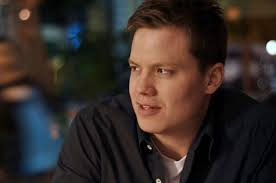 Jason Brubaker is an expert in independent film distribution. He has put together a new educational site, howtosellyourmovie.com, which offers a step by step distribution system for marketing your film. He’s also a donor to the Roy Dean Film Grants.
Jason Brubaker is an expert in independent film distribution. He has put together a new educational site, howtosellyourmovie.com, which offers a step by step distribution system for marketing your film. He’s also a donor to the Roy Dean Film Grants.
In his interview with Carole Dean on The Art of Film Funding podcast, he showed a unique way of how to create an avatar to represent your film’s potential audience. An avatar will represent the likes, characteristics, and demographics of the audience or donors you are trying to reach. He explained how if, for example, your film involved frozen yogurt.
“Once you figured out that, hey, I am going to go after college age women who love frozen yogurt” Jason explained,” that’s even still pretty broad, but once you start to drill down a little bit more, then you start to find these communities, then you can create as you said a database of influencers.”
The next step would be getting out a spreadsheet and finding the top 50 blogs that are geared towards college age women who love frozen yogurt. But, he points out, that it’s better to be as detailed and specific when creating an avatar.
“Ok, I want college age women who love frozen yogurt, who have a preference for chocolate yogurt, and then I would go down even more and say, okay, and they have a sister. All of that kind of stuff factors into the thought process.”
“Once you create an avatar, the next step is to give it a name, okay, like Jo. I am marketing for Jo because Jo loves chocolate frozen yogurt, she is college age and she has a sister. So, how many Jo’s are in this world? Well there is a lot of Jo’s. “
“So, how do I find the Jo’s, and those factors all feed into refining exactly who you are talking to. Because this is what marketing really is. It’s just a conversation where you are connecting with people who have similar interests.”
You can check out the entire podcast below. Jason and Carole Dean also cover:
- How to Build Buzz around Your Film
- The Importance of Film Festivals in Marketing
- Transactional On-Demand
- Distributing Your Film to Schools, Cruises, and Oil Rigs
Expanded Crowdfunding Opportunities for Fiscally Sponsored Filmmakers Through New Partnership
Oxnard, CA From the Heart Productions, a 5.01(c)3 non-profit which has helped filmmakers raise millions of dollars for their projects through their fiscal sponsorship program and in partnership with Indiegogo, is now partnering with crowdfunding platform Seed&Spark to give filmmakers another great option where they can crowdfund and benefit from being fiscally sponsored by From the Heart.

“We had many of our filmmakers inquire about crowdfunding with Seed&Spark which focuses exclusively on helping filmmakers raise money.” said Carole Dean, president and founder of From the Heart Productions. “Since we share the same focus at From the Heart, this partnership is an excellent match.”
By being fiscally sponsored by From the Heart, a filmmaker is able to use their non-profit status for their project. This gives donors a tax deduction for donations which is a powerful incentive for them to contribute to the project. Working with From the Heart as a fiscal sponsor and crowdfunding with Seed&Spark, affords filmmakers many other advantages to help get their films made:
- Guidance and planning in creating a crowdfunding campaign from both From the Heart and Seed&Spark.
- In addition to financial contributions, a project’s supporters can also loan or gift the items a filmmaker has listed on their Seed&Spark WishList.
- Discounts on marketing services, production insurance, hard drives and more from From the Heart fiscal sponsorship program donors.
Seed&Spark has added From the Heart Productions to their partner page. From the Heart has two projects already working with Seed & Spark. Once they have three projects that are raising or have raised funds with them, Seed & Spark will create a curated crowdfunding page for From the Heart.
Fees are a flat 3% credit card fee and Seed&Spark’s fee is 5%- however supporters are automatically offered the opportunity to cover Seed&Spark’s fee at checkout and the majority of people keep that box checked which means platform fees are usually less than 2%. From the Heart’s fee is 3%. Filmmakers get funded when they reach 80% of their goal and get paid after the end of the campaign.
For more information on working with From the Heart, please email info@fromtheheartproductions.com
About From the Heart Productions
From The Heart Productions is a 501(c)3 non-profit dedicated to helping filmmakers get their projects made. Besides working with filmmakers to crowdfund and raise money for their projects, From the Heart also offers a film grant 3 times each year. For over 23 years, the Roy W. Dean Film Grant has given away to filmmakers $2,000,000 in a combination of cash and donated services. The grant is awarded to films that are unique and make a contribution to society. President Carole Dean is the best-selling author of “The Art of Film Funding” which is now in its second edition.
The response to the recent Art of Film Funding podcast featuring Indiegogo’s Kristen Konvitz was tremendous. Kristen shared 3 top tips for Indiegogo success called “The Trifecta”. These tips were used by a film crowdfunder to raise over $640,000 over 2 campaigns.

Many listeners wanted to know more and sent us questions. Kristen, Indiegogo’s New York based Manager of Film, was kind to give us the answers.
How far is press and publicity important for a crowd funding campaign? Filmmakers regularly write blogs and post updates during the campaign, but I am wondering can getting press articles written and video interviews about you and your film help the campaign and how does one go about it.
Press is great for getting eyeballs to your campaign page, however, that does not necessarily translate to contributions. It is certainly better than no eyeballs though! Since there are so many crowdfunding campaigns out there, the best way to get press is if you have a hook (i.e. some sort of press-worthy item attached)
What are the important things as a filmmaker you need to imbibe/ learn/ perform to become successful at crowd funding? Are there any special personality traits one need to imbibe?
Be genuine and passionate about your subject. This is what always shines through in successful campaigns. People give to people – not to projects. Social media is another trait to hone. It can be difficult, but building your audience and engaging with them will only help your career in the long run. Even beyond a crowdfunding campaign.
Does Indiegogo help all projects in their preparation for the crowd funding campaign? How is this choice made? Does the filmmaker approach Indiegogo or Indiegogo chooses projects whom they want to support with feedback and overall preparation for the campaign?
We are an open platform and will help any campaigns that ask for it. Film campaigns can reach out to me at kristen@indiegogo.com
From the Heart Productions is a partner with Indiegogo and has helped filmmaker’s raise over $1.7 million to date. We offer discounted crowdfunding fees, tax deductions for donors, and campaign assistance. For more information, our Indiegogo Information Page.
How much planning should go into your film’s Indiegogo campaign?
Are the perks you picked going to attract donors?
Have you created a plan to share interesting, relevant content?
To get answers on these questions and how to create a successful crowdfunding campaign, Carole Dean interviewed Indiegogo’s New York-based Manager of Film, Kristen Konvitz.
About The Art of Film Funding Podcast
From the Heart is a partner with Indiegogo and has raised over $1.7 million to date for filmmakers. Hosted by the president of From The Heart and author of “The Art of Film Funding”, Carole Dean, the weekly podcast focusing on bringing to filmmakers the best advice, knowledge, and expertise on film funding and filmmaking.
You can check out all the podcasts at The Art of Film Funding on Blogtalk Radio.
In this latest podcast, she interviews Indiegogo’s Kristen Konvitz. Her role at Indiegogo includes acquiring projects in varying stages and overseeing them through all stages of their campaigns. She is instrumental in building relationships between both established and up and coming talent.
Kristen reveals the three top tips to a successful crowdfunding campaign as well as details on Indiegogo’s new partnership with Vimeo.
You can listen to the entire podcast here
Three Top Tips for Success on Indiegogo
Kristen draws on the success of the Indiegogo campaign for Iron Sky for her 3 tips. Iron Sky has run two very successful campaigns on Indiegogo. The first raised over $160,000 while the second raised over $480,000.
Iron Sky called their three tips the “trifecta” (although, maybe after realizing its importance to their success, they now call it “The Holy Trinity”).
Unique Perks
To stand out, you can’t just offer hats or t-shirts. Those are standard items and won’t really generate any excitement or buzz about your project. Offer perks that are very personal to the film, filmmaker, or story. Think of what would tie in to the film that you could not get any were else.
Some perks that are experiential will create interest in your project. Iron Sky offered a part in the film where you would be chased by a dinosaur. Even if you did not choose that perk and donate, it was shared by many on the internet creating awareness for the project.
Constant Updating
Prepare yourself as much as possible for the campaign. That includes mapping out a campaign strategy for the content you will share. Plan out different photos, videos, interviews, as well as new perks that you will release during the campaign.
Good Content
The content you plan and share for your project can’t be spam. It can’t be “support my campaign” or “donate now” over and over. It can include that every so often, but the content should be interesting and make people want to share it. It can include stories about the cast and crew. Photos of the project in pre-production. Also, include articles about events or news related to your project (Doing a documentary on fashion? Include related stories on fashion industry)
Iron Sky prepared videos in advance featuring a character for their film. It was like a mini trailer, but each was unique and increased interest in the project which lead to increased donations.
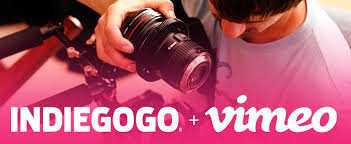
Indiegogo’s Partnership with Vimeo
Announced in January, this partnership was created to give filmmakers who raise funds on Indiegogo a chance to be seen. Indiegogo realizes that most films will not get a traditional theatrical or VOD distribution. This partnership allows eligible films to shown on Vimeo and get needed exposure.
Vimeo’s new Creator Fund will commit up to a million dollars in matching funds for select Indiegogo film campaigns in 2015. Vimeo will contribute digital marketing spend and social promotion for campaigns in the matching funds program and other selected Indiegogo film campaigns.
For these funds, Vimeo will get a 60 day digital exclusive for that film. It does not preclude the film later getting a theartrical release, for example, at a film festival.
The partnership is off go a great start. It has received 166 submissions so date. You can read more about the partnership at Indiegogo and Vimeo Partnership.
“Your vision will become clear only when you can look into your own heart… Who looks outside, dreams; who looks inside, awakes.” Carl Jung
By Carole Dean
Reading film proposals for indie features, documentaries, and short films is a passion of mine. That’s a good thing since I read over five hundred proposals and view over a thousand trailers a year for my Roy W. Dean Film Grants. Filmmakers frequently ask me how they can improve their applications.

Film Grantors or investors are usually under a deadline to read and make a decision on something that should never be judged: your art. Your potential funder is probably reviewing hundreds of proposals, one right after the other, so you need to find a way to make your proposal unique.
The Right Introduction
The introduction or synopsis is the most critical element in the proposal. It is the first thing I read when I pick up a new film proposal. It tells me how compelling the project is and reveals how passionate the filmmaker is about it.
It should tell me a visual story of the film. Sponsors use the synopsis during the selection process as a way of categorizing and separating one type of film from another. If your synopsis is dynamic and is strategically placed on your application, it will remain active in the sponsor’s mind.
This is where your sticky story works for you. It’s important to have a concise overview of the film that gives us that visual description and tells a story with emotion, surprise, concrete information, credibility, etc. I can pitch you films that entered my grants over 10 years ago because I can remember a sticky story.
Let a Picture Help Tell Your Story
This is a visual industry, yet only 10% of the applications I receive include pictures. That always amazes me. Since the person reading your proposal is probably very visual, consider dropping a few pictures or graphics into your proposal.
Or, how about submitting a picture of yourself with your application? Include a photograph taken during your last film shoot –something that shows you in action, behind the camera or giving direction. Even if it’s just your student ID, put that shining smile on the page and let us see who you are! Passion, perseverance, and personalization are what you need to win grants, so don’t be afraid to put your heart on your sleeve to win that grant!
Have You Been There Before?
How many grants have you entered? Tell us about them so we can see how determined you are to make this film. Do you really want this grant? Are you willing to dedicate the next three years of your life to produce this film?
Make it Personal
Find a way to communicate your dedication in your proposal. Include a personal film statement. Tell us what is driving you to make this specific film. That tells us you are in for the long haul. No matter if things get tough, this film is so important that you will not give up. I must feel that in your words.
Carole Dean is president and founder of From the Heart Productions; a 501(c)3 non- profit that offers the Roy W. Dean Film Grants and fiscal sponsorship for independent filmmakers. She hosts the weekly podcast, The Art of Film Funding, interviewing those involved in all aspects of indie film production. She is also the author of The Art of Film Funding, 2nd Edition: Alternative Financing Concepts. See IMDB for producing credits
profit that offers the Roy W. Dean Film Grants and fiscal sponsorship for independent filmmakers. She hosts the weekly podcast, The Art of Film Funding, interviewing those involved in all aspects of indie film production. She is also the author of The Art of Film Funding, 2nd Edition: Alternative Financing Concepts. See IMDB for producing credits
By Carole Dean
The Bible says “love thy neighbor as thyself.” I believe that this means you need to love yourself more than anyone. This self-love allows you to love others. Operating from self-love allows you to move to any situation with confidence. That includes talking to a room full of investors.
Filmmakers are often hardest on themselves. I want you to think of all the talents you have. Most people would literally give their right arm to be able to act or produce or direct and you probably can do all three of these incredible feats.

Loving yourself and exuding confidence is key to funding your film. When you walk into a room people should feel your presence. They should know from your actions that you are confident and in-charge. That’s what investors and donors want. They give the money to you, not the film.
So, who are you? Are you confident? How do you talk? Are you saying, “Well, we hope to….” or “What we want to do is….” If so. you just lost the money person. They need to hear exactly what your plans are and how you will achieve them in a confident manner. If you’re not sure, how can they be about giving you money?
Most wealthy people belong to a group that operates their lives around mission, visions, and values. They have carefully created their one sentence life mission statement. They have a vision of what they want to achieve with deadlines they often hit. Their values are clearly defined and they live by them. They are self-starters and high achievers. They have detailed to-do lists to work from daily. They are looking for people who are like-minded, who have a mission and clearly defined goals.
I want you to show how much you love yourself through your self- confidence. Be like a conductor on a train from one of those great 1940’s movies. Your train is on a track at Grand Central with a clear destination. You have to get others on board. This is much easier when you operate with self-love and the confidence that your film is fully funded.
Money loves confident people. Confident people have a high regard for themselves, they love themselves and this love is a major asset.
by Carole Dean
The Divine Record: Within the Divine Record of every individual there is registered all constructive experience. Therefore when a necessity requires it and the wisdom is there to be used, naturally that is the first place to draw from. For instance if you had a book giving certain formulas of activity, you would not go to another individual who had the same kind of book, but you would look into your own book and save the time and energy. If mankind had not forgotten the Wisdom and Force stored within their consciousness, they would much more readily call upon that which is already at hand.
Ascended Master Instructions by St. Germaine Volume 4 (Page 33)
The answers to our specific questions on our personal needs are waiting for each of us. We have only to go inside to find it. I have been successful in getting answers for many problems because I know that the universal knowledge I need is available.
It’s also a great way for filmmakers to solve the myriad production, artistic, and financial decisions they need to make every day.
All you need to do is ask.

For me, this means that I take the issue with at least two solutions and go to a quiet place. It could be a major decision or just a small decision that I need help with. The secret is to know that you can get the information you need by asking.
Like all practices, it works better if you put yourself into a relaxed state. That may be hard to do on a film set so find a quiet place off somewhere. First I do some regulated breaths to clear myself. I inhale to the count of 8, hold my breath for the count of 8, release my breath for the count of 8 and begin again. After three rounds I can feel my body relax. You have much greater access when you still the mind and relax the body.
Now focus on the issue you need to resolve.
State the issue as you see it. Maybe you can’t decide on an ending for your script or you’ve got an investor offering money, but with lots of strings attached. Now, state two possible solutions. Then leave it.
Give the universe time to analyze it. Stay relaxed for a while then go back to your work. The answer will come. Most of the time it will be a third way to solve the problem or handle the situation and it will be much better than what you had offered.
Sometimes it comes when you are doing the dishes or walking the dog. It just comes into your consciousness and you know that’s the answer. You feel excited when you get it and you feel joy in the knowledge that you have this power inside you. It is your own force that can seek out answers.
Once you have your answer you will feel empowered. Yes, you now realize that you have an abundance of wisdom inside of you. You feel humble knowing that all your questions can be answered. You will find great confidence through the act of going inside for knowledge.
Always know that you are more than your physical body.
You are spirit. As such you have much information stored inside you. You have complete access to information that can serve you well. Simply go inside for the answers because you do have wisdom and force stored in your consciousness.
After filmmaker Nick Aquilino failed for a 3rd time to win the Roy W. Dean Film Grant with his documentary, he presented From The Heart Productions President Carole Dean with a question that intrigued and touched her.
It also gave birth to a new $500 film award for independent filmmakers.
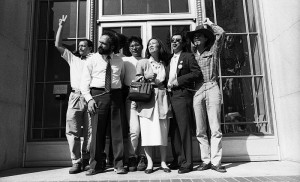
Nick’s submission was on the history of the AIDS crisis in northern California. His work was superior. But, due to the many other exceptional works that applied, he did not make finals list.
When this news was relayed to him, he wondered what would happen to his project and others like his that hunger for recognition. He had been working on this very important project for years. But, it was increasingly difficult to him to keep going without some support, both personal and financial.
He asked Carole if she could come up with perhaps a new micro-grant. It would be for filmmakers who for years have been working on unique films that contribute to society whose projects have gone unrecognized, but should be. Winning just one grant, one award, he told Carole, “would get the other organizations to take note” of his project and others like it.
It is what has made the Roy W. Dean Grant so essential to filmmakers. The grant funds significant films that are in the process of being created. Winning the grant bestows on a filmmaker proof of concept of their project and honors their talent. This moves their films to the top of other grant consideration and funder lists.
So, the Roy W. Dean Grant Jury Award has been created. With it comes a $500 prize. Nick Aquilino is the inaugural recipient.
“I know it take tenacity and unrelenting faith to keep applying for grants” said Carole Dean. “Especially when you are turned down and told you did not win. We want to honor independent filmmakers who keep going against all opposition, who have undying faith in themselves and their films.”
The Roy W. Dean Grant Jury Award will be given to an applicant of the grant who has been working on their project for 3 years or more, shows exceptional work which adheres to the grant’s mission, and who has yet to win a grant.
Another Jury Award will also be given out in this year’s Roy W. Dean Fall Grant. Deadline for applying to the grant is September 30th. Filmmakers can enter using the Roy W. Dean Grant online application form. Entry into the grant enters you in to competition for the Jury Award provided requirements for the award are met. One winner will be chosen from every subsequent grant.
For more information on the Roy W. Dean Grant Jury Prize, please go to Jury Prize Information Page
By Carole Dean
Everything in your room was a thought before it became a material object. Thought creates matter. So says Ken Elliott, author of Manifesting 1, 2, 3, and you don’t need 3 who we interviewed for our The Art of Film Funding Podcast.

His information is fascinating. He shares how he learned to send visions of his thoughts to his teacher. From this, he went on to manifest a successful career as an artist as well as writing an important, well received book.
Does your film need funding? You need to see what you want. Ken says this is the first step in manifesting. Then, “move it from your head to your heart.” We communicate through our heart chakra.
Find this heart place to send your vision to the universe. Remember how special you feel when someone says something that makes your hand touch your heart?
Tell me a great story, touch my heart, and I will open my pocketbook!
Send Your Visions With Emotions
I think you should send your visions with emotions. I like my requests to have“urgency”. So I send them up with joy, happiness and gratitude. Emotions heighten manifestation.
Ken talks about children who manifest what they want. They see it, they say it, or point to it. and they become relentless in their request. They get what they want through:
Focus, Focus, Focus
Once you start focusing on a vision things happen. In our Intentional Filmmaking Class, we focus on what we want by listing it and envisioning it as completed. We list what we want and send our intentions/visions as if they have happened.
That seems to be essential. You have to believe you have it. You are living in it. It is. Once you step into the reality that “it is” you can “feel” it and “see it.” This clear vision is a key to manifesting.
Make a Manifesting “To Do” List
Ken mentions list making. That’s what we do in our class. We make a list of what we want. Short and concise so that we can read it daily and these things become reality.
Ken says that a friend of his who is an out of body person could see his list of things start to manifest on the other side. Then it comes into our reality. I don’t know about this. I just know that the “how” is not important. I know the vision and imaging that you have it is the key to manifesting.
Manifesting “The Secret”
Did you know that Rhonda Burns and her crew manifested their top selling film The Secret? by using the concepts in The Secret? They manifested what they wanted. They saw this film opening all over the world at once.
At that time, there was no way to download a full film. That’s how much faith they had. They envisioned the outcome they wanted. While they were making the film it became possible to download a full feature and they achieved their vision.
Convert Your Worries Into Actions
Ken Elliott says that your biggest enemy is fear. You can overcome it by converting your worries to action items. Put them on your calendar.
I find he is right. I keep a pen and paper and when thoughts come to me that could be a fear, I write an action note to solve the problem. For some reason the brain stops worrying. Then the next day, if it is still a worry you focus on it or you let it go.
Ken says to create a movie for the future first create it in your mind. Close your eyes and imagine you are in your future. See the future and live it. Be on your couch in a lovely home sitting at the end of the day and seeing your film completed.
The Power of Gratefulness
Use the heart now by sending feelings of love and gratitude while you see the completed film and discuss your success. He says you use one of the most powerful things in the universe: gratefulness. Be grateful that you have the finished film. Charge it with gratitude and love. See this movie once a day.
This manifesting is available to all of us. Thought is real, it can create, we know this from quantum physics. Why not believe you can improve your life, create more joy, make a film and fulfill your heart’s desire? Even if for only 90 days, why not use your vision, lists, focus, lack of fear and most importantly faith to create your film?
Carole Dean is president and founder of From the Heart Productions; a 501(c)3 non- profit that offers fiscal sponsorship for independent filmmakers. She hosts the weekly podcast, The Art of Film Funding, interviewing those involved in all aspects of indie film production. She is also the author of The Art of Film Funding, 2nd Edition: Alternative Financing Concepts. See IMDB for producing credits.
profit that offers fiscal sponsorship for independent filmmakers. She hosts the weekly podcast, The Art of Film Funding, interviewing those involved in all aspects of indie film production. She is also the author of The Art of Film Funding, 2nd Edition: Alternative Financing Concepts. See IMDB for producing credits.
Why do filmmakers sometimes behave like fish?
Dr. Deepak Chopra says that “If you talk to people who work in aquariums, they will tell you that when fish are separated from each other in glass tanks with a transparent partition between, preventing the fish from moving to the other tank, and then you remove that partition, the fish still will not be able to go into the other tank. They have made a commitment in their body-mind and believe that’s as far as they can go.”
He says our sensory apparatus, like those fish in the aquarium, develops as a result of our initial sensory experiences and how we are taught to interpret them. We function with a nervous system that reinforces and interprets what happened to us. It’s called a premature cognitive commitment.
Then, we commit ourselves to cognitive realities which are a result of conceptual boundaries that we have structured in our own consciousness. And our nervous system reinforces these boundaries.
I run into this daily in consultations with filmmakers. When they need to raise money, I often suggest ideas that I know to be successful. Many will say, No, I had a horrible time with crowdfunding or I had a party and we barely covered the cost of the food. Once they tried something, their body-mind has made a premature cognitive commitment.
To change this is impossible in one phone call.
A New Kind of Class
So years ago, I created The Trailblazers Class. I asked filmmakers to drive an hour to Oxnard once a month for 6 months to spend from10AM to 4PM with me in my home with lunch served. We started with the foundation of the film, pitch, proposal and trailer and we spent a month on each of these before we moved into funding ideas.
We created a vision board together cutting pictures from magazines, listened to Chopra and his Way of the Wizard audio. We listened to Bruce Lipton tell us how to change our thinking, how we are creating our future with thoughts. We began to think of things as completed and realized we must send positive images and feelings when we thought about our firms and our future. So we created completed visions of the films in our minds and saw them as successful.
Was it successful? Upon research, one woman who was just starting to make a documentary now has a brilliant, completed film and is starting another one. One of the young men in the class has won many grants and is now teaching at NYFA. Another woman artist did a stupendous job with her documentary and wrote a second book with her photos and it is published.
Intentional Filmmakers
That’s why I’ve now created the Intentional Filmmakers Class. It’s a nine month online course (no trips to Oxnard necessary) to help filmmakers remove blocks. It will have only a small group of filmmakers who will work together to discover these body- mind commitments and remove them. I want to help filmmakers accept and embrace new concepts for funding their films.
This is a business where the only constant is change. We must be able to adapt to new concepts and let go of old ones at the drop of a hat. We can do this through new information from scientists, doctors and investigators such as Deepak Chopra, Lynn McTaggart, Brian Green, Stuart Wilde and Michael Beckwith.
Miracles happen every day. I believe that we are all connected. I believe that we care for each other and we are here to support each other. We can create our future. Impossible? I don’t think so.
For more information on the Intentional Filmmaker Class, please go to https://fromtheheartproductions.com/intentional-filmmaking/
Movies do not get made without great intent. Especially the ones nominated for Academy Awards. 2013 best director Oscar nominee Behh Zietlin shot “Beasts of the Southern Wild” on a shoestring budget, with untrained child actors, in a dirty swamp. You aren’t able to do that without the will to get it done.
Intention is the greatest power we have as humans. It’s our will power; we can will things into being. How? We do this by our relentless belief in the outcome of our desire.
Haven’t you heard people say, “He willed it so” when talking about someone who achieved an incredible feat? We use this word without realizing its full potential. Each of us has this power. The question is how to use it to create our art.
Say it Out Loud
Once you find something that you are willing to achieve and know that you will have to put 1000% of your faith and full intention on the completion, say it out loud.
Then, ask yourself how you feel. Are you sick at your stomach? It’s too much? Lower your expectations. Do you feel confident? Then, go for it. Deepak Chopra says each cell is a living thinking organism. Believe me, your body will tell you if you can or can’t do that, stay away from the mind, listen to the body.
Once you have set an intention for what you believe you can achieve, then put it everywhere you spend time, on your computer, the visor of the car, inside your wallet, you want to see this and repeat it 3 times a day. This is a one line statement of your intention as if it is completed. Example, “My brilliant film is completed.” Now, what’s on your “to do” list for the day? Focus on it and expect the universe to help you.
Listen Carefully
Pay attention because the universe now believes that your film is finished and they have to catch up with you. You may be introduced to a D.P., pitch the film, perhaps they will come on board and work with you to get the funding or lend their name.
Fred Alan Wolf says that when you are daydreaming about the future, that there is a “handshake across time” that occurs and this vision may become a reality in the future. So expect things to happen to move your film forward.
Accept all invitations and go as if you film is funded. I want you to have that air of confidence about you. Let them know you are doing something really cool, if they want to get involved, please join me because I am doing this with or without you.
Something that’s Never Been Tried Before
I read treatments and review proposals for over 500 documentaries and films each year. Some apply for the Roy W. Dean Film Grant. Some apply for fiscal sponsorship through From The Heart Productions for indiegogo.com.
Many are fantastic, can’t miss stories that have you anticipating standing in line for a ticket. But, many of those do not get made due to doubts and fears the filmmaker has about the project getting produced and their ability to produce it.
Can filmmakers be taught to create intent? Well, I believe they can and I have intended it to be. I just created a class called Intentional Filmmaking. It combines mentoring in filmmaking along with teaching how to manifest to leverage your intent. A class like this has never been tried. But, I know, and my intent is, that it will work.
Filmmakers need to know that our intentions (thoughts) can create things on this physical plane. They need to intend goals that are possible. Not to get $1 million in 30 days. They need goals that they can honestly reach and set a timeline for achievement. When they have the will to attain that goal, they can’t be stopped.
by Carole Dean
About year ago Helen Hall applied for our Dean grant in NYC with her brilliant film, Pictures of Infinity about the incredible inventor, Nikola Tesla.
She was a finalist in the grant and when she didn’t win I asked her if she would like to work with From the Heart as her fiscal sponsor and let us help her raise money. She agreed and we set to work on creating the trailer and improving the proposal. Helen was open to all suggestions and made changes and followed through after each consultation.
We gave her names of grants that I thought would fund her film and she applied to all of them. She had a matching grant for $30, 000 that was about to expire and we were both reviewing all grants available to get that money.
After months of hard work and only 5 days until her matching grant was expiring, the mail arrived on Dec 26 and there was a check from one of the places FTH suggested. A little known granting organization had sent her a check for $30,000.00. Can you imagine my excitement knowing that with her matching grant this meant $60,000.00 to her?
Here was her funding for the interviews with physicists, an even better trailer and much more! What a wonderful holiday gift for Helen.
See, it’s a test of faith, please never give up. Never stop believing. Just know it will come from wherever it is now.
Focus on doing the work and let the universe do their part. They will not let you down.
by Carole Dean
Many filmmakers might consider it a miracle if their film got nominated for an Oscar or Golden Globe or a Spirit Award. They might consider it a miracle if their film got made! Miracles can happen. But, creating miracles like this don’t just begin with a good story or a great director. Creating miracles starts with understanding the universal law of manifesting.
The age of miracles has not passed. We all have an immense power that allows us create. Creating miracles is identifying with the universal laws to create your future. This power is not outside you, it is inside. You are in charge.
You are eternal and infinite. The universal law for manifesting is impartial. It has no way of knowing what you want. It is pure energy and takes the thoughts you send out and returns them to you unemotionally and in the form you asked for.
I meditated on the films fiscally sponsored through From The Heart Productions and asked for abundance. I asked for hundreds of donations before the holidays. Right after my request, we received over 100 donations in a matter of days. However, they were mostly $10 and $20. So you see, I did not ask for LARGE donations for my filmmakers. It’s a learning process.
This law will give you what you believe in. If you think it won’t work or that you don’t deserve it, you are seriously limiting yourself. So, trust me when I say the beliefs you express as your thoughts and feelings are what you are sending to the universe. You need to think like you did when you were a kid, i.e., that you can do anything, your powers are limitless. Go back to your thinking before people began to say, “You can’t do that!”
We are not our bodies; we are spirit living in a body. We came to this earth as spirit. Remembering that is part of creating miracles. You came in with a goal and that goal is part of you. It may be as simple as learning to love you.
To manifest you need to be sending thoughts and feelings of the highest caliber about yourself. Always know that “you are the greatest.” Muhammad Ali tapped into this miracle manifestation on a daily basis. We can learn from him as we daily say to ourselves how great we are.
The power of the universal law is always with you. It will fulfill your thoughts and feelings.
The next step is look at the nature of your beliefs. You may have established belief about what can and cannot be done. You may believe that people can lift a certain weight and no more, run at a certain speed and no faster.
It is a matter of perception and belief. Your ability to work miracles is predicated on how easily and quickly you can move away from world belief patterns and step above them. You need to mentally leave where you are now and step into the unknown.
Imagine the universal law as a shipping clerk in a factory.
It gets your order and he/she sends out what you ask for, a request for a size 12 gets a size 12. This energy is there to send you what you ask for. Be aware that your thoughts and feelings are sending requests daily to the universal mind and it responds by delivering the same. You need to be sure of what you want and make a strong “ask” with your intentions clearly defined. The power is within you. Use it to manifest miracles daily.
by Carole Dean
A brilliant Australian author, Brendan Murphy, has cleverly compiled information for us about language. He says based on research that “human language seems to have emerged from the grammatical and syntactical structures within our very own DNA”
We know as artists that words are the most important part of our films, our written materials, and especially our “pitches.” Finding the right words to touch hearts, engage people to donate, and support our projects is paramount to their success.
What’s so important to me about this information is that it supports what we
“think” we know and assures us that we are correct in taking care to choose the right words to reach our audiences. If we are all coded with words then our job is to resonate with each other through these words. Words that create visions, feelings, and emotions bring our art to life in another human.
This means phrases like, “I hope to” or “I would like to” should be dropped for “I am making” and “I am creating…” Watching your words can improve your health and your finances.
Brendan goes on to say that “Because the structures of DNA base pairs and of language are so similar, we can alter our own genetics by simply using words and sentences as has been experimentally proven.” That means that by repeating each day sayings such as “I am truly blessed” can benefit you.
He continues with “This finally and scientifically explains why affirmations, autogenous training, hypnosis and the like can have such strong effects on humans and their bodies.”
Inspirational author Louise Hay recorded what she said when she was diagnosed with cancer. She found upon playback that she sounded very negative and changed her words and changed her health and she was able to run Hay House for many years. There are many such stories available on this subject. It’s up to us to experiment with this concept to improve our lives and create our art.
Consider saying dozens of times a day, “My art is funded,” “I am truly blessed.”
Keep your words full of love and respect for you and all you encounter. Remember that words are energy and if you send out good energy it will return to you tenfold.
Source of information on Brendan Murphy:
http://www.facebook.com/The.Grand.Illusion.Books
Abundance
Have you seen the video on indiegogo.com about Karen, the bus monitor that was being bullied? If you want money for your art I suggest you look at that video and take note of the emotions you feel while you are watching it. http://bit.ly/LSlE0X
I felt ashamed that people would treat other people like this.
I felt her hurt and I wanted to reach out to her.
I understood why they wanted to document this event and ask for money for Karen and I wanted to help. This is the first law of film funding, wanting to be part of it.
There was something in it for me. That’s the key issue here. “What’s in it for me?” This is always paramount in the contributor’s mind. To me, donating was a way to say I am sorry you were hurt and I want to help you.
This video came at the perfect time for all of us to see how much we care for each other. Karen raised over $680,000.00 and they wanted $5000.00.
That tells us there is an immense amount of money available. So, please keep this uppermost in your mind. There is abundance.
What’s different about Karen’s campaign than others? It had publicity.
It went viral. That video was everywhere at once. It is the true definition of “do it with others” which is the motto of crowd funding.
They sent that video to the right places or it found the right places and it has the elements needed to attract money.
The question is, “What can you do with your trailer to evoke emotion and need?”
And, how do you get it to go viral? Answer those and your film is funded.
“The individual, having free will, must consciously with full determination, make the demand, and it cannot fail to come forth into expression, no matter what it is so long as the individual holds an unwavering determinate consciousness.” — The “I AM” discourses by Saint Germain
by Carole Dean
I have seen this happen many times in the film world. People making films, that I would bet you could never be financed, not only get them funded but got them distributed and did a fantastic job of self-distribution. How is this possible?
That question is what prompted me to write the book, The Art of Manifesting. I was watching these filmmakers wondering what the secret is. I could see filmmakers with equal education, equal talent, all having lots of passion for their project wondering what makes one finish a successful film and the other go back to dental school?
It’s their belief. Their constant belief that the film is made because they know it and they believe it. Perhaps it is on another level and they just have to bring it into this dimension. They can see it from beginning to end, they know they have the right crew, that the music will be perfect, edit is superb and they know this when they are writing the proposal! This “constantly making the demand of the universe” works; I have seen it in many cases.
You can use this for various stages of production. Use it for crowd funding. I have seen two separate filmmakers call me with only a few days left on their deadlines and both needing about $5,000.00 more. Neither of them knew anyone that could donate so much money. I told them to see themselves hitting the goal. Let go and give it to the universe.
Both of them hit their goals with donations at the last minute! Don’t tell me this doesn’t work. Belief is your most important asset.
Talented people have many ideas for projects. Take the time to feel into them one by one to know which one the universe wants you to make at this time. I have seen films delayed for years only to find the right time and zoom to completion like they were on the Indianapolis speedway. So, is this the time for the project? Ask yourself, which one can I make now?
Take a walk without your cell phone so you can get into the universal consciousness. Ask which film to make now, focus and listen to answers. Once you know the film then begin to visualize it from beginning to end. You must know what you want. You need to send up a completed film as a bundle to get heaven to move things around and bring you what you need.
From this day on, your belief becomes your most important asset. Never doubt. Someone else has trouble getting funding, that’s not your world. You are set to fund and finish your film. Please keep believing your film is finished. Know in your heart it is funded by the universe.
Belief in your ability and belief in your film is your ace in the hole. Make your demand on heaven with “full determination and it cannot fail to come forth into expression.”
For followers of my blog, email me for a free download of the CD of The Art of Manifesting with an effective manifesting meditation for you. caroleedean@att.net
by Carole Dean
The definition of manifest from www.dictionary.com is:
- readily perceived by the eye or the understanding; evident; obvious; apparent; plain
- to prove; put beyond doubt or question
- clearly defined, not hidden
With those options in mind, it’s easy to understand that we are manifesting daily with our words. How you use them to bring you money depends on two major things.
You must be able to visually describe your film so it is “clearly defined”. When you want to pitch your film, making your vision apparent to them is of utmost importance. A good pitch is a verbal description of your film. You want people to see your film as you speak the words. You are making the film obvious to them. That’s what closes a donation or an investment, a visual image given by you to them through your words.
Next, you must have faith in your film to make “an ask” for money with certainty. This must remove any doubts the investor/donor may have. When you talk about your film, people can “feel” your attitude. When you say, “I am trying to raise money to make this film,” that means you are not certain. They may doubt your ability to raise all the funds.
It’s your faith in yourself that people “feel.” When you are certain you can make a film and raise the funds necessary, then you are on track to funding.
If you have any doubts, please don’t pitch until you are aligned with your goals. You may want to review your budget. If you believe it’s too much money for you to raise, then it is. Reduce it until you feel you can do it. These days you need to know you can do it by yourself. Once you fully believe that you can find investors/donors and that your film will make a return on investment then start pitching your film. Because at that point you will be ten times more effective. People will feel your belief in yourself and your film.
The same goes for documentary filmmakers. If your documentary budget is too high, use your brilliant mind to find ways to cut costs. Get the budget to what you think you can raise in a reasonable amount of time.
As filmmakers/artists, you need to believe without a doubt that you can raise the money and make a successful film.
Manifesting the funds and making the film start with a clearly defined goal, proposal or outline and a visual pitch with no doubts attached. Perhaps a good daily affirmation is “My faith funded my film.”
The second edition of The Art of Film Funding: Alternative Financing Concepts is available mid June of 2012.
“When the mind accepts and agrees with a thing or condition, the individual decrees it into this world.” From The I AM Discourses by Saint Germain.
by Carole Dean
Where the mind goes, the attention goes. When you have the slightest doubt about financing your film or any art form, then your attention begins on the “what if” path. Once you go down that path, you’re stepping into doubt, fear, and sadness.
One of the first questions to ask at the beginning of the filmmaking/artistic process is, “Do I want to dedicate 5 years of my life to this?” If the answer is a resounding YES, then you have made your decision from a strong base. You cannot allow any negative thought. Your mind will grab hold and you will sink into depression.
Remember who you are. You are perfection. You are here to create your art. Why would the universe not support you? They gave you all these talents and now you think they will desert you? No. You are fully supported. Your mind can create obstacles and it’s up to you to constantly stand in the knowledge that you are perfect and you will achieve your goal.
What you want, you can achieve. Where ever you let you attention rest, your mind will follow. Be sure to keep only the highest intentions on the outcome of your art. See completion in each step.
Visualize the end result because your mind is exceptionally powerful. It is through your mind and your belief in self that you can achieve your goals. Your visions can become your reality. That is a natural gift humans have. Your job is to use your power of manifesting through visualization on a daily basis, become familiar with it and institute it.
If doubt or fear creep in then remove yourself and find a quiet place. Sit and center yourself. Remember that you are a perfect human and you are here to create your art and continuously say “I am blessed” until you feel your confidence returning.
Faith funds art. It’s your faith in your art that carries you through the process from beginning to end. This can be a joyous journey when you are aware of who you are and your innate powers to create and manifest.
by Carole Dean
How often do you brag? I mean say things like, I am really good at directing or I am an excellent writer.

In this industry, you have to be your own PR person.
More importantly, you want to send your information to the “quantum field.” That is the field of all possibilities that Dr. Chopra talks about and Lynn McTaggart in her book, The Field.
So, what can happen?
You will get better and better. Not necessarily as a bragger, but as a director or writer (or whatever your claim may be) Why? Because you will start to believe in you. Keep accentuating the positive and eliminating the negative and your words become manifested. You start to write or direct or act better and you can feel it.
It works. Your art just keeps getting better, ideas come to you from out of left field, and they are brilliant. You are tuned into that radio station I talked about in the Walking Wi Fi blog. You are connected and you know it and you get better and better at your work and your confidence soars.
But what will my friends say?
Honestly, they will probably agree with you either secretly or openly. You are more talented than you think. So brag about it and what if someone says, aren’t you bragging? You can say yes, I am very proud of what I just wrote or directed or the part I played. I did a good job.
It’s contagious.
Your partner may start to do the same thing and you will begin to hear your friends bragging. Just know that you have started something that works. We all feel better about ourselves when things are clicking and we know that we are working with an external force.
This field of infinite possibilities is there for all of us. It’s just a matter of tapping into it. One of the best ways is by bragging. You are sending your vision of who and what you want to be and the field accepts that information, i.e., a good writer, a good director. Sorry, I meant a great writer, a fantastic director.
So, it sends back ideas and confidence and keeps you moving to a higher status. You will attract better jobs and more people will recommend you and want to work with you.
Be braggadocios for a month and see what happens. I dare you!
Carole Dean is president and founder of From the Heart Productions; a 501(c)3 non- profit that offers the Roy W. Dean Film Grants and fiscal sponsorship for independent filmmakers. She hosts the weekly podcast, The Art of Film Funding, interviewing those involved in all aspects of indie film production. Her new class “How to Fund Your Film” is available on Vimeo on Demand. She is also the author of The Art of Film Funding, 2nd Edition: Alternative Financing Concepts. See IMDB for producing credits
profit that offers the Roy W. Dean Film Grants and fiscal sponsorship for independent filmmakers. She hosts the weekly podcast, The Art of Film Funding, interviewing those involved in all aspects of indie film production. Her new class “How to Fund Your Film” is available on Vimeo on Demand. She is also the author of The Art of Film Funding, 2nd Edition: Alternative Financing Concepts. See IMDB for producing credits
by Carole Dean
You are more powerful than you realize. How you react to situations affects your health, state of mind and future. You can keep your cool in the face of adversity or get mad and take everyone down with you. An old saying goes:
It’s not what happens to you, it’s how you react to what happens.
When we are in the moment of rejection or loss it’s hard to be so philosophical, but that’s what can save us. If we believe there is a greater power watching out for us then perhaps we can handle the situation without over reacting. Emotional upset is a major energy drain and it affects our self esteem. When we feel rejected or unappreciated, we take this personally. Think back to some of your worst moments, then move ahead six months and see what happened in your life.
You may find that a crisis was really an opportunity for change. And what you thought was a crisis, later became a beneficial turning point in your life. But, not all benefits are in the form of money. Look at this Chinese Parable.
The Old Man and his Horse
There once was an old man who lived with his only son at the border of the state. The old man had a strong affection to his horses and he let them graze freely in the open meadow.
One day a servant reported that a horse was missing and told him how sorry he was for him. The old man was not bothered, “Who knows? The loss may bring us good fortune.” he said.
A few months later a strange thing happened. The horse returned and brought with it another fine horse. Everyone told him how lucky he was and he replied, “Who knows?”
One day when the old man’s son was riding the new horse he was thrown off, broke his leg, and was crippled. “Who knows? This may bring us good fortune” said the old man.
A year later, the neighboring state sent troops across the border. All the young, strong men were drafted to fight invaders and most of them were killed. The old man’s son was not drafted because the riding accident had saved his life.
The old man was not attached to the outcome, either good or bad. He just knew there was a greater force that was protecting him and he had the patience and faith to wait for the outcome. He knew he had the power and he used it for his betterment.
I know that’s difficult when you put your art out and people reject it. However, if you can find a way to not react to your immediate feeling of loss or anger, it will benefit you. You are the artist and it’s you who walks out of that meeting with your many talents that the other person probably does not have. So, thank heaven for who you are and all you have.
When something happens that seems like a major loss you have a choice. You can feel guilty; lose your confidence or just say to yourself, “Who knows? This may bring me good fortune.”
It’s your choice. You have the power. Use your power to your benefit.
by Carole Dean
Look at this scene from I Heart the Huckabees: http://www.youtube.com/watch?v=VOgQAMdKdyg
Dustin Hoffman explains one of the most complicated ideas in a very simple way. You are connected to your art like you are to your loved ones.
Our job is to see the big picture through the blanket. We need to remember we are all connected, that’s something we can begin to accept but the hammer and the Eiffel tower are in the blanket too? That means we must move to the next level of consciousness, ok, we can do that. Dustin told us once we are there we find that everything we want or to be we already have and are. So how do we do it?
First we start each day with our daily mantra: “Move over Ali, I am also the Greatest! I can make movies, and support and nurture everything around me. I know that confidence and faith in me are paramount to receiving and understanding the blanket truth.” Never ever put yourself down. Always support and nurture yourself. Remember, you are perfect.
Napoleon Hill’s book Think and Grow Rich says that a major characteristic of people who achieve their goals is that they are living at a higher level, enjoying richness in their life and they have a burning desire to achieve. That’s us. We have burning desires to achieve our art and we need to move to a higher consciousness to realize our full potential as human beings. Why do some people achieve great success and others struggle? We need to find that highway to success because we have seen others zoom ahead in the industry, so where is the on ramp?
Focus. We must remain focused and continually send visuals of our goals as completed to the universe. We need to treat our art as if it exists because it does on another plane. We see it in our heads so all we have to do is bring it into this dimension and we do that through our words and visions.
We each have a Higher Self. Get in touch with that part of you. Pay more attention to the quick thoughts that come to you. Did you ask for guidance? If so, it may be an answer to that question.
Often our Higher Self gives us ideas and ways to make each day easier. Give that information attention; believe what the Higher Self says. Take an umbrella on a sunny day. Take that invitation to a networking event, listen to this Inner Voice. I work with mine each day and it gets stronger the more you believe in it. Always give thanks for the information you get, be grateful for what you have and for your guidance.
I watched a documentary called Clint Eastwood: Out of the Shadows. One comment often made about Clint was he stayed on the set; he seldom left because he wanted to stay focused on all aspects of filmmaking. Clint said he liked to work from a quiet, relaxed place, that’s where you hear the Inner Voice. His peers said he had an inner knowing about directing and seemed to be able to make quick decisions accurately. That’s what it’s like when you are “in the field” where you are connected to your Higher Self, working inside the blanket.
While delivering a speech to the senior class at Harvard, someone in the audience asked 3 time heavyweight boxing champion Muhammad Ali to give them a poem and he created this in an instant. http://www.youtube.com/watch?v=JXQ_IjzWN7A It may be the shortest poem on record.
Ali is a great manifestor. Listen to how free he is with words; he is not afraid to commend himself. He knows that words manifest and he has never to my mind put himself down with his words. He always tells us how great he is and at the same time he is sending the universe this information on how talented he is and he just gets more talented. He always spoke with a freedom from society’s oppressive concepts.
You were probably taught, “don’t toot your own horn!” Or, “You can’t brag, that’s not nice.” Yes, it is. You should be bragging about yourself from the moment you wake up. Tell everyone how good you are at what you do. Why not? Use Ali as a guide. He did it and he only got better and better from his belief in himself. He believed what he said and we did too. We reinforced his beliefs.
Let’s pretend your words are creating your future. Now, you want to send the most positive, brilliant statements known to man about yourself. Tell everyone how great you really are. You need to build your own self confidence. Why? Because money and fame do not go to people who have no confidence or who constantly say, I can’t, I am not, I don’t, what if X happens?, etc.
You were born with an immense amount of talent. Go back to that simple life you had as a child where you manifested what you needed. Just think about the first three years of your life, you could not talk but you got what you needed. You were able to communicate with your parents without words.
Then, you learned to talk and you kept your imagination working and you daydreamed all the time. It is part of childhood. You daydreamed on getting your first bike, or skateboard and you got it. Then you learned how to use it in a flash. Was that just coincidence? No, it was your mind that created your future.
Somewhere in those early teen years controls were put on you and you began to close down your thinking. You started to criticize yourself and say, I can’t do that, I am not good at that, etc. And, guess what? You stopped any growth in those areas. Now, you can undo that simply by starting to say, Yes, I can do that, Yes, I am good at that. You have to really believe it but you can do it.
This is most important to manifesting your film and your future. You must have the highest vibration to bring what you need and want into your life. This vibration comes from the words you use. Look on Dr. Emoto’s web site and see the pictures he has of different words. (http://www.youtube.com/watch?v=tAvzsjcBtx8 )
Surround yourself with high vibrational words.
Your greatest manifestor is your mind, next are your words. You see something in your mind, like your film then how do you bring that film from your mind to this third dimension? You do it with words.
You manifest something from nothing with words. Each word has a unique energy and you want words with the highest energy in your vocabulary not negative low vibration words. Get rid of low vibrational words like no, ugly, bad, can’t, impossible, hate, kill, and daily be conscious of the words you use. They are powerful. Try this for a week and censor your words. Use only the high vibrational words: love, gratitude, honesty, integrity, great, greatest, brilliant, joy, happiness, etc.
Ali knew that. He used words that create images and build futures. He made things happen with his words. He is my greatest example of how to use words to create a future. Copy Ali. He won’t mind, he will love it. Take on his energy of “I am the greatest!” That is the first step to manifesting a brilliant future. Love thyself. Be worthy of all that the universe can give you.
by Carole Dean
It was in the 50’s and thank heavens Sandra Lunsford had a car. We were five ladies that spent each weekend together and her car gave us so much freedom, it let us zip around Lakewood, our stomping grounds, in Dallas, Texas.
Friday nights were always special. We would pile into the old Plymouth and head for the “hot spot” which in those days was a drive-in. We would usually get a coke and French fries to share because we were not there to eat, heaven forbid! We were there to check things out, like who’s dating whom? What were they wearing? Did they have make up on? Just important life-sustaining information for a teenager.
One night the 5 of us were in the car and we were talking to the car of guys next to us as we usually did. We never got out of the car, it was our safety zone. When things got boring or there wasn’t anyone interesting, we left. This night was special because I began an interesting conversation with a nice looking man who did not go to Woodrow Wilson High School or any other school in the area
The only problem was he looked “old” but his intellect compensated for it. We must have talked for almost an hour hanging out of the car windows. I found him to be most wonderful person I had ever talked to. He won my heart when he asked “What are you doing for the rest of your life?” After that Richard Herrin and I were inseparable.
My parents were most particular about the boys I dated but they let me go out with Richard because he was old enough to respect my father’s wishes and always brought me home at 10pm, I was only 16 at the time. I had to drag war stories out of him but I was very curious to know what happened to paralyze his left hand and finally he told me.
He enlisted in the war when he was 16 and served his country well. He was decorated and had a medical discharge keeping him out of any future battles. When the Korean War began he wrote to the Commandant of the Marines asking to re enlist saying he was “fit for duty and ready to serve his country”. The Marines gladly took him.
Richard was sent right to the thick of the war and he told me stories about these “hills” they had to capture and the amount of lives lost for just one hill. He never complained he was truly patriotic and sincerely believed in what he fought for.
One night during the Korean War, Richard told me he was on patrol when he took a bullet through his neck and passed out. The next thing he remembered was the feeling of a boot on his chest and he realized a Korean soldier was standing over him pulling a bayonet out of his chest.
The Korean left him for dead and moved on to kill other soldiers. Richard worked hard to stay awake because he thought if he passed out again he would die. He was feeling very weak and close to death from the loss of blood when a medic came by. Richard said “Get me to the hospital,” the medic said, “The next flight is almost full” and walked away. Richard could hear him saying, “This one looks pretty bad, we should take someone who has a better chance of living.”
Richard knew if he didn’t get on that flight he would die and he called the medic back and said, “I already have one Purple Heart, don’t give up on me, I can make it!” That was enough to get him on the flight. His faith was incredible, he knew laying there on that cold earth that he could live if he could just get to a hospital. He willed himself on that plane, they actually squeezed him in. He was the last man they took on that flight. Richard said he let the sound of the engines lull him to sleep despite the pain, knowing he would live.
Do you think he willed himself to safety? I do. I think his faith and his passion for living got him on that plane. This will power we have is our greatest asset. It’s different than force; it’s a way to make things happen with your mind, your belief and your determination. You know all those talents filmmakers like you have. It’s up to you to use this magnificent will power to bring your film to fruition. You need to want something so much that you are part creator in achieving it. You need to will the universe to comply with your wishes. Can you be that strong and unrelenting?
You know you can do it so it’s just a matter of willing it to be. Use all of your will power conjuring up visions and feeling into the completion. It’s your intentions created by your will power that makes it happen. You probably know the story of Spielberg getting on the lot at Universal but the best part is that he knew he would be a famous filmmaker and he befriended the projectionist. He actually talked him into playing his short film, Amblin, when the dailies were over so the top people could see his work. That’s how he got his first job. He willed it so.
Richard served his country again for President Kennedy in the Bay of Pigs…but that’s another story.
By Carole Dean
What is your potential?
Have you ever set your intentions on what you want to achieve in this life time or even in the next 6 months? How many times have you to planned to achieve something and done it?
I remember completing 10 sessions of Rolfing and at the end my Rolf practitioner shook my hand and said, “The power is in completion.” That is true; when you finish something you release some wonderful power surge. This is self appreciation, so enjoy it and compliment yourself. Make it a point to complete things.
Planning, executing and completion are our ticket to reaching our potential. One major benefit we have of staying on track is to keep listening to our inner voice. Is it supporting? Or, does it tell you that you can’t? Sometimes we have to overcome our greatest enemy, ourselves. How? By being aware of limits we put on ourselves. Listen to yourself, when you say, I can’t do that, think, why not? If John can, why can’t I? The question is “will that something take you closer to your vision?” If yes, then, of course you can. The vision is the quest and the universe will take you to your destination if you let it.
Tune into the “field of infinite possibilities” on a daily basis. Use your hunches. Listen to what people tell you, especially when you ask for help. Normally the universe will give you hunches or ideas and if you don’t listen they often send someone to tell you the answer to your question. Yes, I have seen it happen to me dozens of times. You are talking about a different subject and the other person tells you the answer to your question without knowing how meaningful it is to you.
If “the zero point field”(http://bit.ly/I89BNR) contains all the information of what is and what will be, it’s your job to keep putting your future into that field. What’s more fun than day dreaming? We did it as kids.
Pretending that you are doing what you want to do creates a pathway in consciousness. It’s important to believe that this vision is happening in the present. The vision you daydream stays in the field and it becomes a potential. Now it’s up to you to keep listening to your little voice to achieve that potential. Plus, you have asked for something so things will change in your life to bring that to you, move with the changes.
When in doubt ask your higher self for guidance. Find a quiet place and outline the situation then give two possible options for resolution. That’s all you need to do, leave it to them. Normally, within 24 hours you will have a 3rd option that is much better.
You are not alone. You have a team working for you on the other side. They want you to reach your potential even more than you do. So, call on them. Remember gratitude is one of the highest vibrations in the universe. When you thank them for their support your gratitude raises your vibration and you feel like a million dollars. It is self love and gratitude that propels you to achieve your potential.
“When the mind changes it absolutely affects the body.” Bruce Lipton—Biology of Belief
by Carole Dean
No, we have no nocebos today.
We have heard the power of the placebo and how it works in trials even more than the actual pills. Just one example is a California interior designer who was given a placebo for her 30 year depression and x-rays proved her prefrontal cortex showed marked improvement. Her belief in the pill cured her. (Leuchter, et al, 2002)
Ok, so what about the Doctors who tell someone they can’t be cured and they die soon afterwards? That’s called the nocebo effect, the power of negative beliefs. This can be a dangerous road to travel.
In 1974, Dr. Meador was on the Discovery Health program “Placebo Mind over Medicine” and he told the story of a Nashville salesman who was suffering from cancer of the esophagus. He was treated and appeared to recover but everyone in the medical profession expected his cancer to return and they told him if it came back he would die. That’s just what happened.
The salesman began to have some symptoms and he thought it was cancer and so did Meador. He died very quickly because of his belief in the medical world. The autopsy showed that he did not die from cancer! Meador said he still worries that he may have removed hope of recovery through his words.
Ahh, now we are at the heart of the matter. Words, it’s all about words. As filmmakers we know how important it is write each word to fit the energy of the film and move the story forward.
Now we need to realize how important our every word is. Each word you speak has energy. It can be negative or positive. If you consider that each word has a different vibration and gives a different formation (See http://bit.ly/Ivimwx for Dr. Emoto) then what type of energy are you sending out with your words? Are they placebos, making my film is the easiest thing I have done… or nocebos… I am having a very hard time making this film. My efforts are not working.
Watch your words. They can help you create your film and your future. Each one has a different energy. Find the words that best describe your film and use them over and over. This puts a new meaning to the log line. These words need to visually show me the story as you speak them.
Please, see your film each time you pitch it and keep watching that vision come to life when you read your script and say your log line. Let your words create your film like placebos create wellness, through their energy and your belief system. And watch your words, no nocebos, please!
Your beliefs act like filters on a camera, changing how you see the world. And your biology adapts to those beliefs. —-Bruce Lipton The Biology of Belief
Do you see yourself as a writer or as a high school teacher? When someone asks you what do you do, how do you answer them? What information are you sending to the universe? That’s important.
Once I began saying I am a writer things began to change for me. As I wrote my Art of Film Funding book, each day I said, “I love my publisher” over and over knowing full well I did not have a publisher and that I would publish the book myself and I did. Then, after teaching this book a few months, honest to God, Michael Wiese Publications contacted me and said, “Carole, we would like to publish your book.” I was expecting it.
A key element for any writer’s success is to believe and to live in the consciousness that what you want has already happened. I promised myself when writing the book that I would publish it and I put the money aside to prove it. Do you see your script as a finished film? Are you looking at it from the beginning with the credits rolling? I think you need to go to your favorite screening room; I love Raleigh’s, and sit there by the controls and pretend the room is packed.
You tell the projectionist to “roll it.” And you sit back and watch the titles come up and beam with pride. Say to yourself, “Yes, I chose the right director!” “Yes, that set designer is brilliant,” and keep sending bundles of joy and success to the universe as you sit in a room imaging your successful screening of your finished film.
Once you have the feel of the room, you can recall that at night as you go to sleep or while walking and driving. Just continue to see and feel that success and the completion of the film. Let’s prove to Bruce Lipton that your beliefs can change your biology. You are a happy person having just screened your favorite screenplay. Keep basking in that feeling of success. Believe that money is all around you. Know that on a daily basis, you attract the right people, money and services to create your film.
You need to remember that things will change in your life to bring you what you are asking for. Be open to taking invitations; make all the calls referred to you. Always take the time to chat with people you accidentally meet. Your angles may have spent a lot of time getting both of you in the same place.
Fred Alan Wolf in his book, “The Dreaming Universe” says that “when you are daydreaming it’s like a handshake across time.” Your vision, coupled with your belief and conviction will make things in your current life change to bring what you want. Watch for new people to come into your life.
Expect a miracle. It will happen. You can have your cake and eat it too. But you have to claim your rights.
Who are you? A writer. Claim it, own it, and be proud of it.
We often hear sages say this, but, what does it mean?
by Carole Dean
It means each of us has our own signature, we are all different, and we are all unique. Each of us carries a different frequency; we vibrate to a different drummer if you want to think of it that way. Quantum physics say we are all created with vibrating strings, each of our atoms and molecules have a vibrating string inside. So what does this mean and how can we use this?
We need to keep ourselves in a “higher vibration.” The frequency of joy and gratitude are very high vibrations. Just look at Dr. Emoto’s frozen water crystals. He put words on jars with water so the water would vibrate to that word. Then he froze the water and cut it up into crystals. This page shows a crystal of love and gratitude. http://bit.ly/GGEPrp If you want to feel as beautiful as this crystal, then stay in that energy.
One of our greatest assets is our emotions. Just think how you feel when something wonderful happens to you and you are in “joy.” That takes you closer to who you really are, a spiritual being, that’s who we all are, spiritual beings. Yes, we are spirit inside this wonderful body. We are spirit, “that all knowing essence.”
We have this inner knowing, some people call it intuition. We know when the timing is right for things. We know when to chill out. We have this wonderful sense of timing and we seldom speak about it
Using this gift is tantamount to creating our films. We need to know when to ask that rich person and we need to know just what to say. Tuning into our higher selves gives us an advantage. It allows us to move forward with confidence because we trust our inner self.
Living our lives in joy and gratitude is one of our best assets. Each day we thank the universe for all of our marvelous gifts. The home we have, the food we eat, and the family we love. All of these things are our daily blessings and we honor them. Through gratitude we touch on our higher selves and through joy we rise above the controlling factors that are always “telling us we can’t do this.” We know we can.
When you consistently live in gratitude and joy, people sense it. They listen to you talk about your film and you allay any fears immediately because you are coming from a place of truth, joy, faith. Once they “feel” that you are sincere they become more interested. When you are operating in fear and lack that is easy for them to “read.” They too have a higher self who is tuning into you. If and when they sense your lack of confidence, they pull back and fear takes over them!
It’s our higher selves that know how creative we really are because it knows the creativity we came in with. Imagine that while you are talking to a potential donor/investor. Your higher self is talking to their higher self. I know it’s crazy but what if that is happening? What if their higher self is reading your body language and your confidence or lack of? That would give them an edge, right? They would sense your lack of confidence and end the conversation.
However, through living in joy and gratitude, we can achieve even above our dreams. Remember Oprah said that the universe had much more in store for her than she ever dreamed of? She put no restrictions on her creativity; she knew she would be successful. Why not be another Oprah? Why not let the universe support your dreams. Know that you are a special being with an incredible amount of talent and creativity. Thank the universe each day for all your blessings and each day look for something joyous. When you use gratitude, joy and faith in yourself on a daily basis, you will come across as confident, talented and the magnificent being that you really are.

